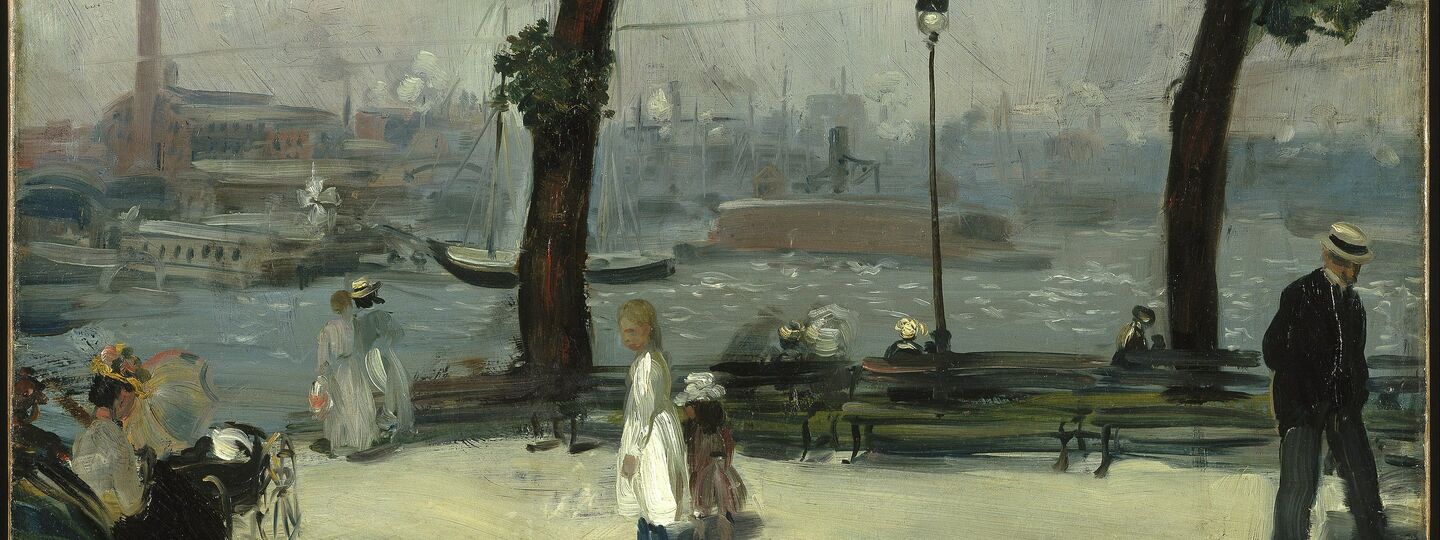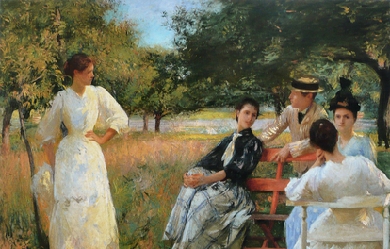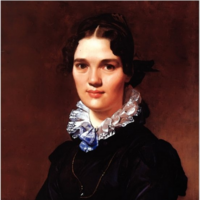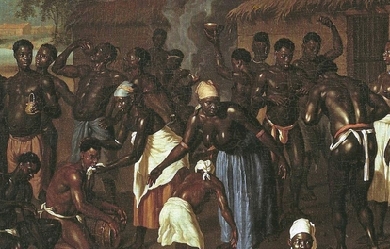
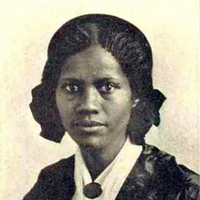
Frances Ellen Watkins Harper (September 24, 1825– February 22, 1911) was an African-American abolitionist, suffragist, poet and author. She was also active in other types of social reform and was a member of the Women’s Christian Temperance Union, which advocated the federal government taking a role in progressive reform. Born free in Baltimore, Maryland, she had a long and prolific career, publishing her first book of poetry at age 20 and her widely praised Iola Leroy, at age 67. In 1850, she became the first woman to teach sewing at the Union Seminary. In 1851, alongside William Still, chairman of the Pennsylvania Abolition Society, she helped escaped slaves along the Underground Railroad on their way to Canada. She began her career as a public speaker and political activist after joining the American Anti-Slavery Society in 1853. Poems on Miscellaneous Subjects (1854) became her biggest commercial success. Her short story “Two Offers” was published in the Anglo-African in 1859. She published Sketches of Southern Life in 1872. It detailed her experience touring the South and meeting newly freed Black people. In these poems she described the harsh living conditions of many. After the Civil War she continued to fight for the rights of women, African Americans, and many other social causes. She helped or held high office in several national progressive organizations. In 1873 Harper became superintendent of the Colored Section of the Philadelphia and Pennsylvania Women’s Christian Temperance Union. In 1894 she helped found the National Association of Colored Women and served as its vice president. Harper died February 22, 1911, nine years before women gained the right to vote. Her funeral service was held at the Unitarian Church on Chestnut Street in Philadelphia. She was buried in Eden Cemetery, next to her daughter, who had died two years before. Life and Works Early Life and Education Frances Ellen Watkins was born to free parents in Baltimore, Maryland. After her mother died when she was three years old in 1828, Watkins was orphaned. She was raised by her maternal aunt and uncle, Rev. William Watkins, who was a civil rights activist. She was educated at his Academy for Negro Youth. Watkins was a major influence on her life and work. At fourteen, Frances found work as a seamstress. Writing career Frances Watkins had her first volume of verse, Forest Leaves, published in 1845 when she was 20. Her second book, Poems on Miscellaneous Subjects (1854), was extremely popular. Over the next few years, it was reprinted numerous times. In 1859, her story “The Two Offers” was published in Anglo-African Magazine, making her the first Black woman to publish a short story. She continued to publish poetry and short stories. She had three novels serialized in a Christian magazine from 1868 to 1888, but was better known for what was long considered her first novel, Iola Leroy, or Shadows Uplifted (1892), published as a book when she was 67. At one time considered the first novel by an African American, it is one of the earliest. (Discoveries of earlier works by Harriet E. Wilson and William Wells Brown have displaced Harper’s work.) While using the conventions of the time, she dealt with serious social issues, including education for women, passing, miscegenation, abolition, reconstruction, temperance, and social responsibility. Teaching and Public Activism In 1850, Watkins moved to Ohio, where she worked as the first female teacher at Union Seminary, established by the Ohio Conference of the African Methodist Episcopal Church. (Union closed in 1863 when the AME Church diverted its funds to purchase Wilberforce University, the first black-owned and operated college.) The school in Wilberforce was run by the Rev. John Mifflin Brown, later a bishop in the AME Church. In 1853, Watkins joined the American Anti-Slavery Society and became a traveling lecturer for the group. In 1854, Watkins delivered her first anti-slavery speech on “Education and the Elevation of Colored Race”. The success of this speech resulted in a two-year lecture tour in Maine for the Anti-Slavery Society. She continued to travel, lecturing throughout the East and Midwest from 1856 to 1860. Progressive Causes Frances Watkins Harper was a strong supporter of abolitionism, prohibition and woman’s suffrage, progressive causes which were connected before and after the American Civil War.. She was also active in the Unitarian Church, which supported abolitionism. An example of her support of the abolition cause, Harper wrote to John Brown (abolitionist), “I thank you that you have been brave enough to reach out your hands to the crushed and blighted of my race; I hope from your sad fate great good may arise to the cause of freedom.” She often read her poetry at the public meetings, including the extremely popular “Bury Me in a Free Land.” In 1858 She refused to give up her seat or ride in the “colored” section of a segregated trolley car in Philadelphia (100 years before Rosa Parks) and wrote one of her most famous poems, “Bury Me In A Free Land,” when she got very sick while on a lecturing tour. Her short story “The Two Offers” became the first short story to be published by a Black woman. In 1866, Harper gave a moving speech before the National Women’s Rights Convention, demanding equal rights for all, including Black women. During the Reconstruction Era, she worked in the South to review and report on living conditions of freedmen. This experience inspired her poems published in Sketches Of Southern Life (1872). She uses the figure of an ex-slave, called Aunt Chloe, as a narrator in several of these. Harper was active in the growing number of Black organizations and came to believe that Black reformers had to be able to set their own priorities. From 1883 to 1890, she helped organize events and programs for the National Woman’s Christian Temperance Union. She had worked with members of the original WCTU, because “it was the most important women’s organization to push for expanding federal power.” “Activists like Harper and Willard campaigned not only for racial and sexual equality but also for a new understanding of the federal government’s responsibility to protect rights, regulate morality, and promote social welfare”. Harper was disappointed when Willard gave priority to white women’s concerns, rather than support Black women’s goals of gaining federal support for an anti-lynching law, defense of black rights, or abolition of the convict lease system. Together with Mary Church Terrell, Harper helped organize the National Association of Colored Women in 1894, and was elected vice president in 1897. Frances Harper died on February 22, 1911.
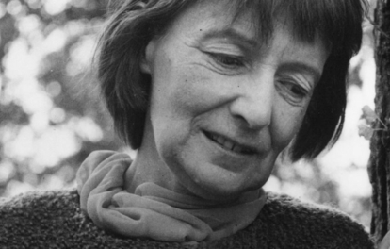
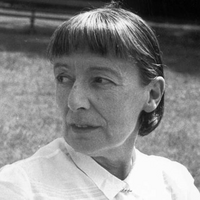
Florence Margaret Smith, known as Stevie Smith (20 September 1902– 7 March 1971) was an English poet and novelist. Life Stevie Smith, born Florence Margaret Smith in Kingston upon Hull, was the second daughter of Ethel and Charles Smith. She was called “Peggy” within her family, but acquired the name “Stevie” as a young woman when she was riding in the park with a friend who said that she reminded him of the jockey Steve Donoghue. Her father was a shipping agent, a business that he had inherited from his father. As the company and his marriage began to fall apart, he ran away to sea and Smith saw very little of her father after that. He appeared occasionally on 24-hour shore leave and sent very brief postcards ("Off to Valparaiso, Love Daddy"). When she was three years old she moved with her mother and sister to Palmers Green in North London where Smith would live until her death in 1971. She resented the fact that her father had abandoned his family. Later, when her mother became ill, her aunt Madge Spear (whom Smith called “The Lion Aunt”) came to live with them, raised Smith and her elder sister Molly and became the most important person in Smith’s life. Spear was a feminist who claimed to have “no patience” with men and, as Smith wrote, “she also had 'no patience’ with Hitler”. Smith and Molly were raised without men and thus became attached to their own independence, in contrast to what Smith described as the typical Victorian family atmosphere of “father knows best”. When Smith was five she developed tubercular peritonitis and was sent to a sanatorium near Broadstairs, Kent, where she remained for three years. She related that her preoccupation with death began when she was seven, at a time when she was very distressed at being sent away from her mother. Death and fear fascinated her and provide the subjects of many of her poems. Her mother died when Smith was 16. When suffering from the depression to which she was subject all her life she was so consoled by the thought of death as a release that, as she put it, she did not have to commit suicide. She wrote in several poems that death was “the only god who must come when he is called”. Smith suffered throughout her life from an acute nervousness, described as a mix of shyness and intense sensitivity. In the Poem “A House of Mercy”, she wrote of her childhood house in North London: It was a house of female habitation, Two ladies fair inhabited the house, And they were brave. For although Fear knocked loud Upon the door, and said he must come in, They did not let him in. Smith was educated at Palmers Green High School and North London Collegiate School for Girls. She spent the remainder of her life with her aunt, and worked as private secretary to Sir Neville Pearson with Sir George Newnes at Newnes Publishing Company in London from 1923 to 1953. Despite her secluded life, she corresponded and socialised widely with other writers and creative artists, including Elisabeth Lutyens, Sally Chilver, Inez Holden, Naomi Mitchison, Isobel English and Anna Kallin. After she retired from Sir Neville Pearson’s service following a nervous breakdown she gave poetry readings and broadcasts on the BBC that gained her new friends and readers among a younger generation. Sylvia Plath became a fan of her poetry and sent Smith a letter in 1962, describing herself as “a desperate Smith-addict.” Plath expressed interest in meeting in person but committed suicide soon after sending the letter. Smith was described by her friends as being naive and selfish in some ways and formidably intelligent in others, having been raised by her aunt as both a spoiled child and a resolutely autonomous woman. Likewise, her political views vacillated between her aunt’s Toryism and her friends’ left-wing tendencies. Smith was celibate for most of her life, although she rejected the idea that she was lonely as a result, alleging that she had a number of intimate relationships with friends and family that kept her fulfilled. She never entirely abandoned or accepted the Anglican faith of her childhood, describing herself as a “lapsed atheist”, and wrote sensitively about theological puzzles;"There is a God in whom I do not believe/Yet to this God my love stretches." Her 14-page essay of 1958, “The Necessity of Not Believing”, concludes: “There is no reason to be sad, as some people are sad when they feel religion slipping off from them. There is no reason to be sad, it is a good thing.” Smith died of a brain tumour on 7 March 1971. Her last collection, Scorpion and other Poems was published posthumously in 1972, and the Collected Poems followed in 1975. Three novels were republished and there was a successful play based on her life, Stevie, written by Hugh Whitemore. It was filmed in 1978 by Robert Enders and starred Glenda Jackson and Mona Washbourne. Fiction Smith wrote three novels, the first of which, Novel on Yellow Paper, was published in 1936. Apart from death, common subjects in her writing include loneliness; myth and legend; absurd vignettes, usually drawn from middle-class British life, war, human cruelty and religion. All her novels are lightly fictionalised accounts of her own life, which got her into trouble at times as people recognised themselves. Smith said that two of the male characters in her last book are different aspects of George Orwell, who was close to Smith. There were rumours that they were lovers; he was married to his first wife at the time. Novel on Yellow Paper (Cape, 1936) Smith’s first novel is structured as the random typings of a bored secretary, Pompey. She plays word games, retells stories from classical and popular culture, remembers events from her childhood, gossips about her friends and describes her family, particularly her beloved Aunt. As with all Smith’s novels, there is an early scene where the heroine expresses feelings and beliefs which she will later feel significant, although ambiguous, regret for. In Novel on Yellow Paper that belief is anti-Semitism, where she feels elation at being the “only Goy” at a Jewish party. This apparently throwaway scene acts as a timebomb, which detonates at the centre of the novel when Pompey visits Germany as the Nazis are gaining power. With horror, she acknowledges the continuity between her feeling “Hurray for being a Goy” at the party and the madness that is overtaking Germany. The German scenes stand out in the novel, but perhaps equally powerful is her dissection of failed love. She describes two unsuccessful relationships, first with the German Karl and then with the suburban Freddy. The final section of the novel describes with unusual clarity the intense pain of her break-up with Freddy. Over the Frontier (Cape, 1938) Smith herself dismissed her second novel as a failed experiment, but its attempt to parody popular genre fiction to explore profound political issues now seems to anticipate post-modern fiction. If anti-Semitism was one of the key themes of Novel on Yellow Paper, Over the Frontier is concerned with militarism. In particular, she asks how the necessity of fighting Fascism can be achieved without descending into the nationalism and dehumanisation that fascism represents. After a failed romance the heroine, Pompey, suffers a breakdown and is sent to Germany to recuperate. At this point the novel changes style radically, as Pompey becomes part of an adventure/spy yarn in the style of John Buchan or Dornford Yates. As the novel becomes increasingly dreamlike, Pompey crosses over the frontier to become a spy and soldier. If her initial motives are idealistic, she becomes seduced by the intrigue and, ultimately, violence. The vision Smith offers is a bleak one: “Power and cruelty are the strengths of our lives, and only in their weakness is there love.” The Holiday (Chapman and Hall, 1949) Smith’s final novel is her own favourite, and most fully realised. It is concerned with personal and political malaise in the immediate post-war period. Most of the characters are either employed in the army or civil service in post-war reconstruction, and its heroine, Celia, works for the Ministry as a cryptographer and propagandist. The Holiday describes a series of hopeless relationships. Celia and her cousin Caz are in love, but cannot pursue their affair since it is believed that, because of their parents’ adultery, they are half-brother and sister. Celia’s other cousin Tom is in love with her, Basil is love with Tom, Tom is estranged from his father, Celia’s beloved Uncle Heber, who pines for a reconciliation; and Celia’s best friend Tiny longs for the married Vera. These unhappy, futureless but intractable relationships are mirrored by the novel’s political concerns. The unsustainability of the British Empire and the uncertainty over Britain’s post-war role are constant themes, and many of the characters discuss their personal and political concerns as if they were seamlessly linked. Caz is on leave from Palestine and is deeply disillusioned, Tom goes mad during the war, and it is telling that the family scandal that blights Celia and Caz’s lives took place in India. Just as Pompey’s anti-semitism was tested in Novel on Yellow Paper, so Celia’s traditional nationalism and sentimental support for colonialism is challenged throughout The Holiday. Poetry Smith’s first volume of poetry, the self-illustrated A Good Time Was Had By All, was published in 1937 and established her as a poet. Soon her poems were found in periodicals. Her style was often very dark; her characters were perpetually saying “goodbye” to their friends or welcoming death. At the same time her work has an eerie levity and can be very funny though it is neither light nor whimsical. “Stevie Smith often uses the word 'peculiar’ and it is the best word to describe her effects” (Hermione Lee). She was never sentimental, undercutting any pathetic effects with the ruthless honesty of her humour. “A good time was had by all” itself became a catch phrase, still occasionally used to this day. Smith said she got the phrase from parish magazines, where descriptions of church picnics often included this phrase. This saying has become so familiar that it is recognised even by those who are unaware of its origin. Variations appear in pop culture, including “Being for the Benefit of Mr. Kite!” by the Beatles. Though her poems were remarkably consistent in tone and quality throughout her life, their subject matter changed over time, with less of the outrageous wit of her youth and more reflection on suffering, faith and the end of life. Her best-known poem is “Not Waving but Drowning”. She was awarded the Cholmondeley Award for Poets in 1966 and won the Queen’s Gold Medal for poetry in 1969. She published nine volumes of poems in her lifetime (three more were released posthumously).
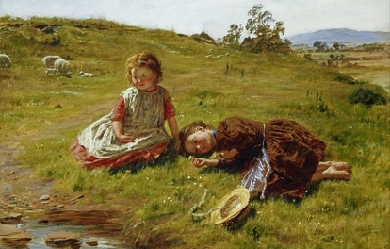
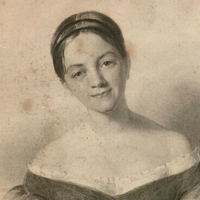
Letitia Elizabeth Landon (14 August 1802– 15 October 1838), English poet and novelist, better known by her initials L. E. L. Early life Letitia Elizabeth Landon was born on 14 August 1802 in Chelsea, London to John Landon and Catherine Jane, née Bishop. A precocious child, Landon learned to read as a toddler; an invalid neighbour would scatter letter tiles on the floor and reward young Letitia for reading, and, according to her father, “she used to bring home many rewards.” At the age of five, Landon began attending Mrs Rowden’s school at 22 Hans Place, which counted among its alumnae Mary Russell Mitford and Lady Caroline Lamb. The family moved to the country in 1809, so that John Landon could carry out a model farm project, and Landon was educated at home by her cousin Elizabeth from that point on. Elizabeth, though older, soon found her knowledge and abilities outstripped by those of her pupil: “When I asked Letitia any question relating either to history, geography, grammar - Plutarch’s Lives, or to any book we had been reading, I was pretty certain her answers would be perfectly correct; still, not exactly recollecting, and unwilling she should find out just then that I was less learned than herself, I used thus to question her: ‘Are you quite certain?’... I never knew her to be wrong.” When young, Letitia was very close to her younger brother, Whittington Henry, born 1804. Paying for Whittington through university (Worcester Colloege, Oxford) was one of the needs that drove Letitia to publish. She also supported his preferment and later dedicated her poem ‘Captain Cook’ to their childhood days together. Whittington went on to become a minister and published a book of Sermons in 1835. Sadly, he did not show any appreciation for all his sister’s financial assistance but spread false rumours about her marriage and death. Letitia also had a little sister, Elizabeth Jane (1806), who was a frail child and died in 1819, aged just 13. Little is known of Elizabeth but her death may well have left a profound impression on Letitia and it could be Elizabeth who is referred to in the poem ‘The Forgotten One’. Appearance and character The following statements from those who knew her give some idea of the woman known as L. E. L. Emma Roberts, from her introduction to “The Zenana and other works”: L.E.L. could not be, strictly speaking, called handsome ; her eyes being the only good feature in a countenance, which was, however, so animated, and lighted up with such intellectual expression, as to be exceedingly attractive. Gay and piquant, her clear complexion, dark hair, and eyes, rendered her, when in health and spirits, a sparkling brunette. The prettiness of L.E.L., though generally acknowledged, was not talked about ; and many persons, on their first introduction, were as pleasingly surprised as the Ettrick Shepherd, who, gazing upon her with great admiration, exclaimed “ I did na think ye had been sae bonny.” Her figure was slight, and beautifully proportioned, with little hands and feet ; and these personal advantages, added to her kind and endearing manners, rendered her exceedingly fascinating. William Jerdan, from his autobiography: In truth, she was the most unselfish of human creatures; and it was quite extraordinary to witness her ceaseless consideration for the feelings of others, even in minute trifles, whilst her own mind was probably troubled and oppressed; a sweet disposition, so perfectly amiable, from Nature’s fount, and so unalterable in its manifestations throughout her entire life, that every one who enjoyed her society loved her, and servants, companions, intimates, friends, all united in esteem and affection for the gentle and self-sacrificing being who never exhibited a single trait of egotism, presumption, or unkindliness! Mrs S.C. Hall from The Atlantic Monthly: Perhaps the greatest magic she exercised was, that, after the first rush of remembrance of all that wonderful young woman had written had subsided, she rendered you completely oblivious of what she had done by the irresistible charm of what she was. You forgot all about her books,—you only felt the intense delight of life with her ; she was penetrating and sympathetic, and entered into your feelings so entirely that you wondered how 'the little witch’ could read you so readily and so rightly,—and if, now and then, you were startled, perhaps dismayed, by her wit, it was but the prick of a diamond arrow. Words and thoughts that she flung hither and thither, without design or intent beyond the amusement of the moment, come to me still with a mingled thrill of pleasure and pain that I cannot describe, and that my most friendly readers, not having known her, could not understand. Mrs A.K.C. Elwood from her Memoirs of Literary Ladies: It was her invariable habit to write in her bed-room,—"a homely-looking, almost uncomfortable room, fronting the street, and barely furnished—with a simple white bed, at the foot of which was a small, old, oblong-shaped sort of dressing-table, quite covered with a common worn writing-desk, heaped with papers, while some strewed the ground, the table being too small for aught besides the desk. A little high-backed cane chair, which gave you any idea but that of comfort, and a few books scattered about, completed the author’s paraphernalia.” Emma Roberts again: She not only read, but thoroughly understood, and entered into the merits of every book that came out ; while it is merely necessary to refer to her printed works, to calculate the amount of information which she had gathered from preceding authors. The history and literature of all ages and all countries were familiar to her ; nor did she acquire any portion of her knowledge in a superficial manner ; the extent of her learning, and the depth of her research, manifesting themselves in publications which do not bear her name ; her claim to them being only known to friends, who, like myself, had access to her desk, and with whom she knew the secret might be safely trusted. One aspect that is common to all accounts of those who knew Miss Landon is that she possessed an exceptionally high level of intelligence. Fredric Rowton in his 'The Female Poets of Great Britain’ puts it thus: Of Mrs. Maclean’s genius there can be but one opinion. It is distinguished by very great intellectual power, a highly sensitive and ardent imagination, an intense fervour of passionate emotion, and almost unequalled eloquence and fluency. Of mere art she displays but little. Her style is irregular and careless, and her painting sketchy and rough: but there is genius in every line she has written. (Like many others, Rowton is deceived by the artistry of Landon’s projection of herself as the improvisatrice, L. E. L. As Glennis Stevenson writes, few poets have been as artificial as Landon in her 'gushing stream of Song’. She cites the usage of repetition, mirroring and the embedding of texts amongst the techniques that account for the characteristic intensity of Landon’s poetry.) Literary career An agricultural depression soon followed, and the family moved back to London in 1815, where John Landon made the acquaintance of William Jerdan, editor of the Literary Gazette. According to 19th-century commentator Mrs A. T. Thomson, Jerdan took notice of the young Landon when he saw her coming down the street, “trundling a hoop with one hand, and holding in the other a book of poems, of which she was catching a glimpse between the agitating course of her evolutions.” Jerdan encouraged Landon’s poetic endeavors, and her first poem was published under the single initial “L” in the Gazette in 1820, when Landon was 18. The following year, with financial support from her grandmother, Landon published a book of poetry, The Fate of Adelaide, under her full name. The book met with little critical notice but sold well; Landon, however, never received any profits, as the publisher went out of business shortly thereafter. The same month that The Fate of Adelaide appeared, Landon published two poems under the initials “L.E.L.” in Gazette; these poems, and the initials under which they were published, attracted much discussion and speculation. As contemporary critic Laman Blanchard put it, the initials L.E.L. “speedily became a signature of magical interest and curiousity.” Bulwer Lytton wrote that, as a young college student, he and his classmates would rush every Saturday afternoon for the ‘Literary Gazette,’ [with] an impatient anxiety to hasten at once to that corner of the sheet which contained the three magical letters L.E.L. And all of us praised the verse, and all of us guessed at the author. We soon learned it was a female, and our admiration was doubled, and our conjectures tripled.” Landon served as the Gazette’s chief reviewer as she continued to write poetry; her second collection, The Improvisatrice, appeared in 1824. Landon’s father died later that year, and Landon was forced to use her writing to support both herself and her family; Contemporaries saw this profit-motive as detrimental to the quality of Landon’s work. Mary Mitford claimed that the novels of Catherine Stepney were honed and polished by Landon. By 1826, Landon’s high reputation began to suffer as rumours circulated that she had had affairs or secretly borne children. (In 2000, scholar Cynthia Lawford published an article in the London Review of Books citing birth records implying that Landon had in fact borne children in the 1820s from a secret affair with Jerdan.) Details of Letitia’s children by William (Ella, Fred and Laura) and their descendants can be found in Susan Matoff Landon continued, however, to publish poetry, and in 1831 she published her first novel, Romance and Reality. She became engaged to John Forster. Forster became aware of the rumours regarding Landon’s sexual activity, and asked her to refute them. Landon responded that Forster should "make every inquiry in [his] power," which Forster did; after he pronounced himself satisfied of Landon’s purity, however, Landon broke off their engagement. To him, she wrote: The more I think, the more I feel I ought not– I can not– allow you to unite yourself with one accused of - I can not write it. The mere suspicion is dreadful as death. Were it stated as a fact, that might be disproved. Were it a difficulty of any other kind, I might say, Look back at every action of my life, ask every friend I have. But what answer can I give ...? I feel that to give up all idea of a near and dear connection is as much my duty to myself as to you... Privately, however, Landon stated that she would never marry a man who had mistrusted her. In a letter to Bulwer Lytton, she wrote that “if his future protection is to harass and humiliate me as much as his present - God keep me from it... I cannot get over the entire want of delicacy to me which could repeat such slander to myself.” After this, Landon began to "[talk] of marrying any one, and of wishing to get away, from England, and from those who had thus misunderstood her." In October 1836, Landon met George Maclean, governor of the Gold Coast (now Ghana), at a dinner party, and the two began a relationship. Maclean, however, moved to Scotland early the following year, to the surprise and distress of Landon and her friends. After much prodding, Maclean returned to England and he and Landon were married shortly thereafter, on 7 June 1838. The marriage was kept secret, and Landon spent the first month of it living with friends. Emma Roberts writes of Mr Maclean: “No one could better appreciate than L.E.L. the high and sterling qualities of her lover’s character, his philanthropic and unceasing endeavours to improve the condition of the natives of Africa ; the noble manner in which he interfered to prevent the horrid waste of human life by the barbarian princes in his neighbourhood ; and the chivalric energy with which he strove to put an end to the slave-trade. L.E.L. esteemed Mr. Maclean the more, in consequence of his not approaching her with the adulation with which her ear had been accustomed, to satiety ; she was gratified by the manly nature of his attachment. Possessing, in her estimation, merits of the highest order, the influence which he gained over her promised, in the opinion of those who were best acquainted with the docility of her temper, and her ready acquiescence with the wishes of those she loved, to ensure lasting happiness.” In early July, the couple sailed for Cape Coast, where they arrived on 16 August. Two months later, on 15 October, Landon was found dead, a bottle of prussic acid in her hand. However, that she was poisoned thereby was a gross assumption. There is ample evidence that she showed symptoms of Stokes-Adams syndrome for which the dilute acid was taken as a remedy. No autopsy was carried out and from the eye-witness accounts it seems, in retrospect, almost certain that Mrs McLean suffered a fatal convulsion. Her death was therefore from natural causes, causes that were independent of her location. In addition to the works listed below, Miss Landon is known to be responsible for innumerable anonymous reviews and other articles whose authorship is unlikely ever now to be established (compare Emma Roberts above). She also assumed the occasional pseudonym: for one, she adopted the name Iole for a period through 1826. One of her Iole poems, The Frozen Ship, was later included in the collection, The Vow of the Peacock. Among the poets of her time to recognise and admire her were Elizabeth Barrett Browning, who wrote “L.E.L.'s Last Question” in homage, and Christina Rossetti, who published a tribute poem entitled “L.E.L” in her 1866 volume “The Prince’s Progress and Other Poems.” Reputation Her reputation, while high in the 19th century, fell during most of the 20th as literary fashions changed and Landon’s poetry was perceived as overly simple and sentimental. In recent years, however, scholars and critics have increasingly studied her work, beginning with Germaine Greer in the 1970s. Critics such as Isobel Armstrong argue that the supposed simplicity of poetry such as Landon’s is deceptive, and that women poets of the 19th century often employed a method of writing which allows for multiple, concurrent levels of meaning. Moreover, 20th century opinions were perhaps influenced by the almost completely inaccurate picture of the poet and her life that built up following her death. It was not considered that the very bases for such criticism had already been systematically and effectively demolished by Sarah Sheppard in her “Characteristics of the Genius and Writings of L E L” of 1841. Any assessment should not forget the factors that brought Landon to pre-eminence: the originality of her ideas and the sheer beauty of her poetry in all its many diverse forms. Those ideas engendered a whole new school of poetry (the 'Landon School’), which spread not only in England but also in America.
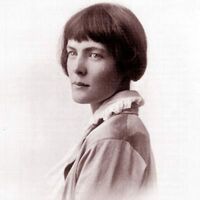
About H.D's Life and Career—An Essay by Bonnie Kime Scott Having rejected Victorian norms for modern experiments, H. D. repeatedly launched out from instructors found among the early canonized male modernists. She developed new lyric, mythic, and mystical forms in poetry and prose, and an alternative bisexual lifestyle that were little appreciated until the 1980s. Her literary contacts included Ezra Pound, Marianne Moore, William Carlos Williams, Ford Madox Ford, May Sinclair, Dorothy Richardson, Richard Aldington, Bryher, D. H. Lawrence, T. S. Eliot, Djuna Barnes, Gertrude Stein, Amy Lowell, Norman Douglas, Edith Sitwell, and Elizabeth Bowen. She was the literary editor of the Egoist (1916-1917), and admired the work of James Joyce and Virginia Woolf. Younger poets like Robert Duncan, Allen Ginsberg, May Sarton, and Denise Levertov took her as a mentor. H. D.'s literary papers are at Beinecke Library, Yale University. Autobiographies H. D. was born into the Moravian community of her artistic, musical mother, Helen (Wolle), in Bethlehem, Pennsylvania, and reared in Upper Darby, a Philadelphia suburb convenient to the University of Pennsylvania. Her astronomer father, Charles, was director of the Flower Observatory there. The Gift (written 1941-1944; published 1982) is cast in the inquiring voice of a child, who is cognizant of several generations of her family, and of her own dreams and fantasies. Her grandmother ultimately bestows a sense of her self-enabling heritage or "gift," and its mystical connection to the Moravians. Mystical access to the past through visions and the reading of "signets"--signs or heiroglyphs requiring patient deciphering--is essential to all of H. D.'s autobiographical writing. H.D.'s autobiographical writings from the middle years of her life are invaluable to the study of the gendered politics of experimental modernism, and the place of the female analysand in psychoanalysis. Ezra Pound entered her life while she was still a schoolgirl in Pennsylvania. In verses written for her, Pound gave her the persona of the "dryad," which persisted among her many self-concepts. They were twice engaged. Barbara Guest has suggested that his tutelage interfered with her studies at Bryn Mawr, which she quit in her second year. She did meet another as yet undeclared poet, Marianne Moore, while there (1904-1906). H. D. joined the same literary circles Pound traveled in when she moved to London in 1911. In a famous incident of 1913, he sent some of her verse to Harriet Monroe's Poetry Magazine, appending the signature "H.D., Imagiste." They served as models of the new poetry he was promoting. End to Torment: A Memoir of Ezra Pound by H. D. (written 1958; published 1979) explores this relationship. With Bid Me to Live (written 1933-1950, published 1960), H. D. writes herself out of what Rachel Blau DuPlessis has called "romantic thralldom" with two other literary men. She married the British poet, Richard Aldington, in 1913. Having enlisted in World War I, his fictional counterpart called for her sustaining letters to the front, yet resented her sharing verses with "Rico," the D. H. Lawrence counterpart, and flaunted his infidelities. Lawrence had a charismatic effect upon H. D. during the war years in London, but discouraged her creation of male subjects in her poetry, and objected to her relationship with Cecil Grey, the painter whom she joined in Cornwall. Grey became the father of her only surviving child, Frances Perdita Aldington (born 1919). H. D. had been anguished over the still-birth of a daughter fathered by Aldington in 1915, and the death of her brother Gilbert at the front. Bid Me to Live was part of a "madrigal cycle," including also Paint it To-Day and Asphodel (neither yet fully published). All of these works intertwined the painful demands of war and love relationships, as does the brilliant long poem, Trilogy (written 1944-1946), with its images of rebirth taken from classical, Egyptian and Christian sources. Tribute to Freud (written 1944; published gradually from 1945-1985) offers a third creative re-vision of male-inspired paradigms. H. D. was analyzed by Freud in 1933 and 1934, in an attempt to overcome writer's block. She also underwent analysis with Hans Sachs in the 1930s, with Erich Heydt in the 1950s, and was treated with intervenous shock therapy, following a major breakdown in 1946. Freud encouraged her to write straight history to breakout of the personal crisis she experienced during World War I. With Bid Me to Live she felt she was escaping also from the influence of psychoanalysis; she did revise Freud's role as analyst to something more like a medium. Spiritualism became an overriding interest in the 1940s. Communication with the dead and projections from another realm were regular tropes in her writing, including her last writing, Hermetic Definition. Bisexuality H.D.'s troubled alliance with Pound was mingled with her love of Frances Josepha Gregg, a student at the Pennsylvania Academy of Fine Arts, and the recipient of some of her earliest poems. Gregg and her mother were H. D.'s companions on the 1911 trip to London. Prefiguring other bisexual triangles she would involve herself in, H. D. planned to accompany Gregg on her honeymoon, but was prevented from doing so by Pound. The strains between lesbian and heterosexual attractions, experienced over the Gregg relationship, entered into H. D.'s novel HERmione (written 1927, the year before Radclyffe Hall's lesbian novel, The Well of Loneliness, was the subject of an obscenity trial; published 1981). The novelist and editor Bryher (Winnifred Ellerman, an heiress to a shipping fortune), was the most significant companion of her mature life. Their relationship survived until H. D.'s death in 1961, spanning Bryher's two marriages of convenience to Robert McAlmon and Kenneth Macpherson, in circumstances that included significant travel and residences mainly in London and Switzerland. H. D. has credited Bryher with saving her life during the final months of her pregnancy in 1919, when she was struck with influenza. Bryher and H. D. traveled to the Scilly Islands together in June 1919, for a month of idyllic companionship; they went to Greece (sailing by Lesbos) with H. D.'s mother in 1922, and traveled to Egypt the next year. The women made a creative trio with the artist and filmmaker Kenneth Macpherson from 1927 to 1932; Macpherson became H. D.'s lover, and Bryher's husband, and the married couple adopted H. D.'s daughter Perdita. Their collaborations included photomontages, the film journal Close Up, to which H. D. supplied poetry and reviews, and Borderline, a film in which H. D. starred with Paul Robeson. The project is one indication of H. D.'s literary connections to the Harlem Renaissance, and her attraction to the margins of modernism. Much of H.D.'s poetry published in the 1930s and 1940s appeared in Life and Letters Today, edited by Bryher. H.D. was well informed about contemporary theories of homosexuality, due both to her analysis by Freud, who pronounced her bisexual, and her friendship with sexologist Havelock Ellis, whom she met in 1919. But she was not limited to their views, particularly in HER. Her shift in interest to mother-daughter dynamics in Notes on Thought and Vision may have been a transference out of Freud's influence. However, Ellis failed to appreciate her revolutionary "bell jar" experiences of pregnancy and the unconscious, recorded in Notes on Thought and Vision, and his lack of enthusiasm may have discouraged her publishing it. Critical Repositioning and Feminist Criticism For many years H. D. was known chiefly for the stark, chiseled images and experimental rhythms of her earliest work, collected as Sea Garden (1916). This fit the imagist program of Ezra Pound. She also had a limited reputation as a classicist and translator of Greek. Feminist critics, led by Susan Stanford Friedman and Rachel Blau DuPlessis, have studied H.D.'s works for feminine lesbian, and bisexual discourses. Since the early 1980s H. D.'s epic and prose writing have received more attention, and work self-suppressed in her own lifetime has been recovered and studied. H. D.'s frequent recourse to the palimpsest can be seen as an escape from binary and hierarchical thinking associated with patriarchy. The term denotes a parchment that retains partially erased parts of earlier writings, which strain productively with new text. She titled a three-part story sequence Palimpsest (written 1923-1924), but the term also applies to her rewritings of her own selfhood in autobiographies, and to her rewritten myths. H. D. can be credited with anticipating the maternal semiotic of Julia Kristeva, and with giving a female voice to classical myths. Sandra Gilbert ("H. D.? Who Was She?," Contemporary Literature 24 [1983]: 496-511) suggests that she developed a "woman's mythology" in Trilogy, Helen in Egypt, and Hermetic Definition. Alicia Ostriker ("Thieves of Language," Signs 8, no. 1 [1982]: 68-90) includes H. D. among women poets who construct new myths to include their selves. H. D.'s Greek texts, culminating in Helen in Egypt, explore the divinity of the goddess, the sexually ecstatic Eleusinian mysteries, and the female version of patriarchal epics. A criticism from Lawrence S. Rainey ("Canon, Gender and Text," Representing Modern Texts, ed. George Bornstein, [1991]) is that in recent years H. D.'s work has been studied for the sake of content conducive to feminist solidarity, rather than aesthetic value. Yet this criticism neglects feminist critics' remarks on the formal devices of mythic mask, palimpsest, and return of the repressed, characteristic of life-writing cure, that moved H. D. beyond confinement to the divisive gender stereotypes of her day.

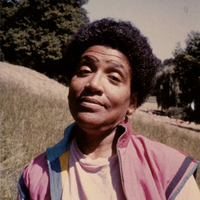
Audre Lorde (/ˈɔːdri lɔːrd/; born Audrey Geraldine Lorde, February 18, 1934– November 17, 1992) was an African American writer, feminist, womanist, lesbian, and civil rights activist. As a poet, she is best known for technical mastery and emotional expression, particularly in her poems expressing anger and outrage at civil and social injustices she observed throughout her life. Her poems and prose largely dealt with issues related to civil rights, feminism, and the exploration of black female identity. In relation to non-intersectional feminism in the United States, Lorde famously said, “Those of us who stand outside the circle of this society’s definition of acceptable women; those of us who have been forged in the crucibles of difference—those of us who are poor, who are lesbians, who are Black, who are older—know that survival is not an academic skill. It is learning how to take our differences and make them strengths. For the master’s tools will never dismantle the master’s house. They may allow us temporarily to beat him at his own game, but they will never enable us to bring about genuine change. And this fact is only threatening to those women who still define the master’s house as their only source of support.” Life and work Lorde was born in New York City to Caribbean immigrants from Barbados and Carriacou, Frederick Byron Lorde (called Byron) and Linda Gertrude Belmar Lorde, who settled in Harlem. Lorde’s mother was of mixed ancestry but could pass for white, a source of pride for her family. Lorde’s father was darker than the Belmar family liked, and they only allowed the couple to marry because of Byron Lorde’s charm, ambition, and persistence. Nearsighted to the point of being legally blind, and the youngest of three daughters (two older sisters, Phyllis and Helen), Audre Lorde grew up hearing her mother’s stories about the West Indies. She learned to talk while she learned to read, at the age of four, and her mother taught her to write at around the same time. She wrote her first poem when she was in eighth grade. Born Audrey Geraldine Lorde, she chose to drop the “y” from her first name while still a child, explaining in Zami: A New Spelling of My Name that she was more interested in the artistic symmetry of the “e”-endings in the two side-by-side names “Audre Lorde” than in spelling her name the way her parents had intended. Lorde’s relationship with her parents was difficult from a young age. She was able to spend very little time with her father and mother, who were busy maintaining their real estate business in the tumultuous economy after the Great Depression, and when she did see them, they were often cold or emotionally distant. In particular, Lorde’s relationship with her mother, who was deeply suspicious of people with darker skin than hers (which Lorde’s was) and the outside world in general, was characterized by “tough love” and strict adherence to family rules. Lorde’s difficult relationship with her mother would figure prominently in later poems, such as Coal’s “Story Books on a Kitchen Table.” As a child, Lorde, who struggled with communication, came to appreciate the power of poetry as a form of expression. She memorized a great deal of poetry, and would use it to communicate, to the extent that, “If asked how she was feeling, Audre would reply by reciting a poem.” Around the age of twelve, she began writing her own poetry and connecting with others at her school who were considered “outcasts” as she felt she was. She attended Hunter College High School, a secondary school for intellectually gifted students, and graduated in 1951. In 1954, she spent a pivotal year as a student at the National University of Mexico, a period she described as a time of affirmation and renewal, during which she confirmed her identity on personal and artistic levels as a lesbian and poet. On her return to New York, she attended Hunter College, graduating class of 1959. There, she worked as a librarian, continued writing and became an active participant in the gay culture of Greenwich Village. She furthered her education at Columbia University, earning a master’s degree in Library Science in 1961. She also worked during this time as a librarian at Mount Vernon Public Library and married attorney Edwin Rollins; they divorced in 1970 after having two children, Elizabeth and Jonathan. In 1966, Lorde became head librarian at Town School Library in New York City, where she remained until 1968. In 1968 Lorde was writer-in-residence at Tougaloo College in Mississippi, where she met Frances Clayton, a white professor of psychology, who was to be her romantic partner until 1989. Lorde’s time at Tougaloo College, like her year at the National University of Mexico, was a formative experience for Lorde as an artist. She led workshops with her young, black undergraduate students, many of whom were eager to discuss the civil rights issues of that time. Through her interactions with her students, she reaffirmed her desire not only to live out her “crazy and queer” identity, but devoted new attention to the formal aspects of her craft as a poet. Her book of poems Cables to Rage came out of her time and experiences at Tougaloo. From 1977 to 1978 Lorde had a brief affair with the sculptor and painter Mildred Thompson. The two met in Nigeria in 1977 at the Second World Black and African Festival of Arts and Culture (FESTAC 77). Their affair ran its course during the time that Thompson lived in Washington, D.C. The Berlin Years In 1984 Audre Lorde started a visiting professorship in Berlin Germany at the Free University of Berlin. She was invited by Dagmar Schultz who met her at the UN “World Women’s Conference” in Copenhagen in 1980. While Lorde was in Germany she made a significant impact on the women there and was a big part of the start of the Afro-German movement. The term Afro-German was created by Lorde and some Black German women as a nod to African-American. During her many trips to Germany, she touched many women’s lives including May Ayim, Ika Hugel-Marshell, and Hegal Emde. All of these women decided to start writing after they met Audre Lorde. She encouraged the women of Germany to speak up and have a voice. Instead of fighting through violence, Lorde thought that language was a powerful form of resistance. Her impact on Germany reached more than just Afro-German women. Many white women and men found Lorde’s work to be very beneficial to their own lives. They started to put their privilege and power into question and became more conscious. Because of her impact on the Afro-German movement, Dagmar Schultz put together a documentary to highlight the chapter of her life that was not known to many. Audre Lorde - The Berlin Years was accepted by the Berlinale in 2012 and from then was showed at many different film festivals around the world and received five awards. The film showed the lack of recognition that Lorde received for her contributions towards the theories of intersectionality. Last years Audre Lorde battled cancer for fourteen years. She was first diagnosed with breast cancer in 1978 and underwent a mastectomy. Six years later, she was diagnosed with liver cancer. After her diagnosis, she chose to become more focused on both her life and her writing. She wrote The Cancer Journals, which won the American Library Association Gay Caucus Book of the Year Award in 1981. She featured as the subject of a documentary called A Litany for Survival: The Life and Work of Audre Lorde, which shows her as an author, poet, human rights activist, feminist, lesbian, a teacher, a survivor, and a crusader against bigotry. She is quoted in the film as saying: “What I leave behind has a life of its own. I’ve said this about poetry; I’ve said it about children. Well, in a sense I’m saying it about the very artifact of who I have been.” From 1991 until her death, she was the New York State Poet Laureate. In 1992, she received the Bill Whitehead Award for Lifetime Achievement from Publishing Triangle. In 2001, Publishing Triangle instituted the Audre Lorde Award to honour works of lesbian poetry. Lorde died of liver cancer on November 17, 1992, in St. Croix, where she had been living with Gloria I. Joseph. She was 58. In an African naming ceremony before her death, she took the name Gamba Adisa, which means “Warrior: She Who Makes Her Meaning Known”. Work Poetry Lorde focused her discussion of difference not only on differences between groups of women but between conflicting differences within the individual. “I am defined as other in every group I’m part of,” she declared. “The outsider, both strength and weakness. Yet without community there is certainly no liberation, no future, only the most vulnerable and temporary armistice between me and my oppression”. She described herself both as a part of a “continuum of women” and a “concert of voices” within herself. Her conception of her many layers of selfhood is replicated in the multi-genres of her work. Critic Carmen Birkle wrote: “Her multicultural self is thus reflected in a multicultural text, in multi-genres, in which the individual cultures are no longer separate and autonomous entities but melt into a larger whole without losing their individual importance.” Her refusal to be placed in a particular category, whether social or literary, was characteristic of her determination to come across as an individual rather than a stereotype. Lorde considered herself a “lesbian, mother, warrior, poet” and used poetry to get this message across. Lorde’s poetry was published very regularly during the 1960s—in Langston Hughes’ 1962 New Negro Poets, USA; in several foreign anthologies; and in black literary magazines. During this time, she was also politically active in civil rights, anti-war, and feminist movements. In 1968, Lorde published The First Cities, her first volume of poems. It was edited by Diane di Prima, a former classmate and friend from Hunter College High School. The First Cities has been described as a “quiet, introspective book,” and Dudley Randall, a poet and critic, asserted in his review of the book that Lorde “does not wave a black flag, but her blackness is there, implicit, in the bone”. Her second volume, Cables to Rage (1970), which was mainly written during her tenure as poet-in-residence at Tougaloo College in Mississippi, addressed themes of love, betrayal, childbirth, and the complexities of raising children. It is particularly noteworthy for the poem “Martha,” in which Lorde openly confirms her homosexuality for the first time in her writing: "[W]e shall love each other here if ever at all.” Nominated for the National Book Award for poetry in 1973, From a Land Where Other People Live (Broadside Press) shows Lorde’s personal struggles with identity and anger at social injustice. The volume deals with themes of anger, loneliness, and injustice, as well as what it means to be an African-American woman, mother, friend, and lover. 1974 saw the release of New York Head Shop and Museum, which gives a picture of Lorde’s New York through the lenses of both the civil rights movement and her own restricted childhood: stricken with poverty and neglect and, in Lorde’s opinion, in need of political action. Despite the success of these volumes, it was the release of Coal in 1976 that established Lorde as an influential voice in the Black Arts Movement (Norton), as well as introducing her to a wider audience. The volume includes poems from both The First Cities and Cables to Rage, and it unties many of the themes Lorde would become known for throughout her career: her rage at racial injustice, her celebration of her black identity, and her call for an intersectional consideration of women’s experiences. Lorde followed Coal up with Between Our Selves (also in 1976) and Hanging Fire (1978). In Lorde’s volume The Black Unicorn (1978), she describes her identity within the mythos of African female deities of creation, fertility, and warrior strength. This reclamation of African female identity both builds and challenges existing Black Arts ideas about pan-Africanism. While writers like Amiri Baraka and Ishmael Reed utilized African cosmology in a way that “furnished a repertoire of bold male gods capable of forging and defending an aboriginal black universe,” in Lorde’s writing “that warrior ethos is transferred to a female vanguard capable equally of force and fertility.” Lorde’s poetry became more open and personal as she grew older and became more confident in her sexuality. In Sister Outsider: Essays and Speeches, Lorde states, "Poetry is the way we help give name to the nameless so it can be thought…As they become known to and accepted by us, our feelings and the honest exploration of them become sanctuaries and spawning grounds for the most radical and daring ideas." Sister Outsider also elaborates Lorde’s challenge to European-American traditions. Prose The Cancer Journals (1980), derived in part from personal journals written in the late seventies, and A Burst of Light (1988) both use non-fiction prose to preserve, explore, and reflect on Lorde’s diagnosis, treatment, and recovery from breast cancer. In both works, Lorde deals with Western notions of illness, treatment, and physical beauty and prosthesis, as well as themes of death, fear of mortality, victimization versus survival, and inner power. Lorde’s deeply personal novel Zami: A New Spelling of My Name (1982), described as a “biomythography,” chronicles her childhood and adulthood. The narrative deals with the evolution of Lorde’s sexuality and self-awareness. In Sister Outsider: Essays and Speeches (1984), Lorde asserts the necessity of communicating the experience of marginalized groups in order to make their struggles visible in a repressive society. She emphasizes the need for different groups of people (particularly white women and African-American women) to find common ground in their lived experience. One of her works in Sister Outsider: Essays and Speeches is “The Master’s Tools Will Never Dismantle the Master’s House.” Lorde questions the scope and ability for change to be instigated when examining problems through a racist, patriarchal lens. She insists that women see differences between other women not as something to be tolerated, but something that is necessary to generate power and to actively “be” in the world. This will create a community that embraces differences, which will ultimately lead to liberation. Lorde elucidates, “Divide and conquer, in our world, must become define and empower." Also, one must educate themselves about the oppression of others because expecting a marginalized group to educate the oppressors is the continuation of racist, patriarchal thought. She explains that this is a major tool utilized by oppressors to keep the oppressed occupied with the master’s concerns. She concludes that in order to bring about real change, we cannot work within the racist, patriarchal framework because change brought about in that will not remain. Another work in Sister Outsider: Essays and Speeches is “The Transformation of Silence into Language and Action.*” Lorde discusses the importance of speaking, even when afraid because one’s silence will not protect them from being marginalized and oppressed. Many people fear to speak the truth because of how it may cause pain, however, one ought to put fear into perspective when deliberating whether to speak or not. Lorde emphasizes that “the transformation of silence into language and action is a self-revelation, and that always seems fraught with danger." People are afraid of others’ reactions for speaking, but mostly for demanding visibility, which is essential to live. Lorde adds, “We can sit in our corners mute forever while our sisters and ourselves are wasted, while our children are distorted and destroyed, while our earth is poisoned; we can sit in our safe corners mute as bottles, and we will still be no less afraid." People are taught to respect their fear of speaking more than silence, but ultimately, the silence will choke us anyway, so we might as well speak the truth. In 1980, together with Barbara Smith and Cherríe Moraga, she co-founded Kitchen Table: Women of Color Press, the first U.S. publisher for women of color. Lorde was State Poet of New York from 1991 to 1992. Theory Her writings are based on the “theory of difference,” the idea that the binary opposition between men and women is overly simplistic; although feminists have found it necessary to present the illusion of a solid, unified whole, the category of women itself is full of subdivisions. Lorde identified issues of class, race, age, gender, and even health– this last was added as she battled cancer in her later years– as being fundamental to the female experience. She argued that, although differences in gender have received all the focus, it is essential that these other differences are also recognized and addressed. “Lorde,” writes the critic Carmen Birkle, “puts her emphasis on the authenticity of experience. She wants her difference acknowledged but not judged; she does not want to be subsumed into the one general category of ‘woman.’” This theory is today known as intersectionality. While acknowledging that the differences between women are wide and varied, most of Lorde’s works are concerned with two subsets that concerned her primarily—race and sexuality. In Ada Gay Griffin and Michelle Parkerson’s documentary A Litany for Survival: The Life and Work of Audre Lorde, Lorde says, "Let me tell you first about what it was like being a Black woman poet in the ‘60s, from jump. It meant being invisible. It meant being really invisible. It meant being doubly invisible as a Black feminist woman and it meant being triply invisible as a Black lesbian and feminist". In her essay “The Erotic as Power,” written in 1978 and collected in Sister Outsider, Lorde theorizes the Erotic as a site of power for women only when they learn to release it from its suppression and embrace it. She proposes that the Erotic needs to be explored and experienced wholeheartedly, because it exists not only in reference to sexuality and the sexual, but also as a feeling of enjoyment, love, and thrill that is felt towards any task or experience that satisfies women in their lives, be it reading a book or loving one’s job. She dismisses “the false belief that only by the suppression of the erotic within our lives and consciousness can women be truly strong. But that strength is illusory, for it is fashioned within the context of male models of power.” She explains how patriarchal society has misnamed it used it against women, causing women to fear it. Women also fear it because the erotic is powerful and a deep feeling. Women must share each others’ power rather than use it without consent, which is abuse. They should do it as a method to connect everyone in their differences and similarities. Utilizing, the erotic as power allows women to use their knowledge and power to face the issues of racism, patriarchy, and our anti-erotic society. Contemporary feminist thought Lorde set out to confront issues of racism in feminist thought. She maintained that a great deal of the scholarship of white feminists served to augment the oppression of black women, a conviction that led to angry confrontation, most notably in a blunt open letter addressed to the fellow radical lesbian feminist Mary Daly, to which Lorde claimed she received no reply. Daly’s reply letter to Lorde, dated 4½ months later, was found in 2003 in Lorde’s files after she died. This fervent disagreement with notable white feminists furthered Lorde’s persona as an outsider: "In the institutional milieu of black feminist and black lesbian feminist scholars [...] and within the context of conferences sponsored by white feminist academics, Lorde stood out as an angry, accusatory, isolated black feminist lesbian voice". The criticism was not one-sided: many white feminists were angered by Lorde’s brand of feminism. In her 1984 essay “The Master’s Tools Will Never Dismantle the Master’s House,” Lorde attacked underlying racism within feminism, describing it as unrecognized dependence on the patriarchy. She argued that, by denying difference in the category of women, white feminists merely furthered old systems of oppression and that, in so doing, they were preventing any real, lasting change. Her argument aligned white feminists who did not recognize race as a feminist issue with white male slave-masters, describing both as “agents of oppression.” Lorde’s comments on feminism In Audre Lorde’s “Age, Race, Class, and Sex: Women Redefining Difference,” she writes: “Certainly there are very real differences between us of race, age, and sex. But it is not those differences between us that are separating us. It is rather our refusal to recognize those differences, and to examine the distortions which result from our misnaming them and their effects upon human behavior and expectation.” More specifically she states: “As white women ignore their built-in privilege of whiteness and define woman in terms of their own experience alone, then women of color become ‘other’.” Self-identified as “a forty-nine-year-old Black lesbian feminist socialist mother of two,” Lorde is considered as “other, deviant, inferior, or just plain wrong” in the eyes of the normative “white male heterosexual capitalist” social hierarchy. “We speak not of human difference, but of human deviance,” she writes. In this respect, Lorde’s ideology coincides with womanism, which “allows black women to affirm and celebrate their color and culture in a way that feminism does not.” Influences on Black Feminism Lorde’s work on black feminism continues to be examined by scholars today. Jennifer C. Nash examines how black feminists acknowledge their identities and find love for themselves through those differences. Nash cites Lorde, who writes, “I urge each one of us here to reach down into that deep place of knowledge inside herself and touch that terror and loathing of any difference that lives there. See whose face it wears. Then the personal as the political can begin to illuminate all our choices." Nash explains that Lorde is urging black feminists to embrace politics rather than fear it, which will lead to an improvement in society for them. Lorde adds, “Black women sharing close ties with each other, politically or emotionally, are not the enemies of Black men. Too frequently, however, some Black men attempt to rule by fear those Black women who are more ally than enemy.” Lorde insists that the fight between black women and men must end in order to end racist politics. Personal Identity Throughout Lorde’s career she included the idea of a collective identity in many of her poems and books. Audre Lorde did not just identify with one category but she wanted to celebrate all parts of herself equally. She was known to describe herself as African-American, black, feminist, poet, mother, etc. In her novel Zami: A New Spelling of My Name Lorde focuses on how her many different identities shape her life and the different experiences she has because of them. She shows us that personal identity is found within the connections between seemingly different parts of life. Personal identity is often associated with the visual aspect of a person, but as Lies Xhonneux theorizes when identity is singled down to just to what you see, some people, even within minority groups, can become invisible. In her late book The Cancer Journals she said “If I didn’t define myself for myself, I would be crunched into other people’s fantasies for me and eaten alive.” This is important because an identity is more than just what people see or think of a person, it is something that must be defined by the individual. “The House of Difference” is a phrase that has stuck with Lorde’s identity theories. Her idea was that everyone is different from each other and it is the collective differences that make us who we are, instead of one little thing. Focusing on all of the aspects of identity brings people together more than choosing one piece of an identity. Audre Lorde and womanism Audre Lorde’s criticism of feminists of the 1960s identified issues of race, class, age, gender and sexuality. Similarly, author and poet Alice Walker coined the term “womanist” in an attempt to distinguish black female and minority female experience from “feminism”. While “feminism” is defined as “a collection of movements and ideologies that share a common goal: to define, establish, and achieve equal political, economic, cultural, personal, and social rights for women” by imposing simplistic opposition between “men” and “women,” the theorists and activists of the 1960s and 1970s usually neglected the experiential difference caused by factors such as race and gender among different social groups. Womanism and its ambiguity Womanism’s existence naturally opens various definitions and interpretations. Alice Walker’s comments on womanism, that “womanist is to feminist as purple is to lavender,” suggests that the scope of study of womanism includes and exceeds that of feminism. In its narrowest definition, womanism is the black feminist movement that was formed in response to the growth of racial stereotypes in the feminist movement. In a broad sense, however, womanism is “a social change perspective based upon the everyday problems and experiences of black women and other women of minority demographics,” but also one that “more broadly seeks methods to eradicate inequalities not just for black women, but for all people” by imposing socialist ideology and equality. However, because womanism is open to interpretation, one of the most common criticisms of womanism is its lack of a unified set of tenets. It is also criticized for its lack of discussion of sexuality. Lorde actively strived for the change of culture within the feminist community by implementing womanist ideology. In the journal "Anger Among Allies: Audre Lorde’s 1981 Keynote Admonishing the National Women’s Studies Association," it is stated that Lorde’s speech contributed to communication with scholars’ understanding of human biases. While “anger, marginalized communities, and US Culture” are the major themes of the speech, Lorde implemented various communication techniques to shift subjectivities of the “white feminist” audience. Lorde further explained that “we are working in a context of oppression and threat, the cause of which is certainly not the angers which lie between us, but rather that virulent hatred leveled against all women, people of color, lesbians and gay men, poor people—against all of us who are seeking to examine the particulars of our lives as we resist our oppressions, moving towards coalition and effective action.” Audre Lorde and critique of womanism A major critique of womanism is its failure to explicitly address homosexuality within the female community. Very little womanist literature relates to lesbian or bisexual issues, and many scholars consider the reluctance to accept homosexuality accountable to the gender simplistic model of womanism. According to Lorde’s essay “Age, Race, Class, and Sex: Women Redefining Difference,” “the need for unity is often misnamed as a need for homogeneity.” She writes, “A fear of lesbians, or of being accused of being a lesbian, has led many Black women into testifying against themselves.” Contrary to this, Audre Lorde was very open to her own sexuality and sexual awakening. In Zami: A New Spelling of My Name, her famous “biomythography” (a term coined by Lorde that combines “biography” and “mythology”) she writes, “Years afterward when I was grown, whenever I thought about the way I smelled that day, I would have a fantasy of my mother, her hands wiped dry from the washing, and her apron untied and laid neatly away, looking down upon me lying on the couch, and then slowly, thoroughly, our touching and caressing each other’s most secret places.” According to scholar Anh Hua, Lorde turns female abjection—menstruation, female sexuality, and female incest with the mother—into powerful scenes of female relationship and connection, thus subverting patriarchal heterosexist culture. With such a strong ideology and open-mindedness, Lorde’s impact on lesbian society is also significant. An attendee of a 1978 reading of Lorde’s essay “Uses for the Erotic: the Erotic as Power” says: “She asked if all the lesbians in the room would please stand. Almost the entire audience rose.” Tributes The Callen-Lorde Community Health Center is an organization in New York City named for Michael Callen and Audre Lorde, which is dedicated to providing medical health care to the city’s LGBT population without regard to ability to pay. Callen-Lorde is the only primary care center in New York City created specifically to serve the LGBT community. The Audre Lorde Project, founded in 1994, is a Brooklyn-based organization for queer people of color. The organization concentrates on community organizing and radical nonviolent activism around progressive issues within New York City, especially relating to queer and transgender communities, AIDS and HIV activism, pro-immigrant activism, prison reform, and organizing among youth of color. The Audre Lorde Award is an annual literary award presented by Publishing Triangle to honor works of lesbian poetry, first presented in 2001. In 2014 Lorde was inducted into the Legacy Walk, an outdoor public display in Chicago, Illinois that celebrates LGBT history and people.
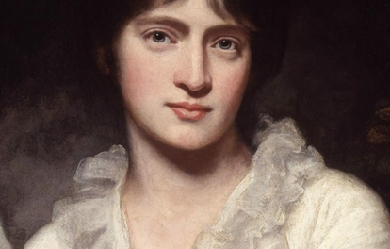

Amelia Opie, née Alderson (12 November 1769– 2 December 1853), was an English author who published numerous novels in the Romantic Period of the early 19th century, through 1828. Opie was also a leading abolitionist in Norwich, England. Life and work Amelia Alderson was the daughter of James Alderson, a physician, and Amelia Briggs of Norwich, England. She was a cousin of notable judge Edward Hall Alderson, with whom she corresponded throughout her life, and also a cousin of notable artist Henry Perronet Briggs. Miss Alderson had inherited radical principles and was an ardent admirer of John Horne Tooke. She was close to activists John Philip Kemble, Sarah Siddons, William Godwin and Mary Wollstonecraft. Marriage and family In 1798 Alderson married John Opie, the painter. The nine years of her married life before her husband’s death were happy, although her husband did not share her love of society. With his encouragement, in 1801 she completed a novel entitled Father and Daughter, which showed genuine fancy and pathos. Writing career Amelia Opie published regularly after that. Her volume of Poems, published in 1802 went through six editions, and was followed by The Warrior’s Return and other poems in 1808. More novels followed: Adeline Mowbray (1804), Simple Tales (1806), Temper (1812), Tales of Real Life (1813), Valentine’s Eve (1816), Tales of the Heart (1818), and Madeline (1822). Opie wrote The dangers of Coquetry at age 18. Her novel Father and Daughter (1801) is about misled virtue and family reconciliation. Encouraged by her husband to continue writing, she published Adeline Mowbray (1804), an exploration of women’s education, marriage, and abolition of slavery. The novel is noted in particular for engaging the history of Opie’s former friend Mary Wollstonecraft, whose relationship with the American Gilbert Imlay outside marriage, and later marriage to the philosopher William Godwin caused some scandal. Godwin had previously argued against marriage as an institution by which women were owned as property, but when Wollstonecraft became pregnant, they married despite his prior principles. In the novel, Adeline early on becomes involved with a philosopher who takes a principled stand against marriage, only to be convinced to marry a West Indian Landowner against her better judgment. The novel also engages abolitionist sentiment, in the story of a mixed-race woman and her family whom Adeline saves from poverty at some expense to herself. Amelia Opie divided her time between London and Norwich. She was a friend of writers Sir Walter Scott, Richard Brinsley Sheridan and Madame de Stael. In 1825, following the death of her father who objected, she joined the Society of Friends through the influence of Joseph John Gurney and his sisters who were longtime friends and neighbors in Norwich. The rest of her life was spent mostly in travelling and working at charity, though she published an anti-slavery poem, The Black Man’s Lament in 1826 and a volume of devotional poems, Lays for the Dead in 1834. Opie worked with Anna Gurney to create a Ladies Anti-Slavery Society in Norwich. Opie went to World’s Anti-Slavery Convention in London in 1840 where she one of the few women who was included in the commemorative painting. Even late in life, Opie maintained connections with writers, for instance receiving George Borrow as a guest. After a visit to Cromer, a seaside resort on the North Norfolk coast, she caught a chill and retired to her bedroom. A year later on 2 December 1853, she died at Norwich and was said to retain her vivacity to the last. She was buried at the Gildencroft Quaker Cemetery, Norwich. An somewhat sanitized biography of her, A Life, by Miss C.L. Brightwell, was published in 1854.
.jpg)
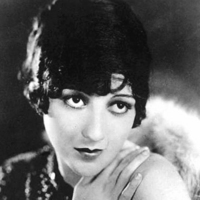
Elinor Morton Wylie (September 7, 1885– December 16, 1928) was an American poet and novelist popular in the 1920s and 1930s. “She was famous during her life almost as much for her ethereal beauty and personality as for her melodious, sensuous poetry.” Life Family and childhood Elinor Wylie was born Elinor Morton Hoyt in Somerville, New Jersey, into a socially prominent family. Her grandfather, Henry M. Hoyt, was a governor of Pennsylvania. Her aunt was Helen Hoyt, a minor poet. Her parents were Henry Martyn Hoyt, Jr., who would be United States Solicitor General from 1903 to 1909; and Anne Morton McMichael (born July 31, 1861 in Pa.). Their other children were: Henry Martyn Hoyt (May 8, 1887, in Pa.– August 25, 1920 in New York City) who married Alice Gordon Parker (1885–1951) Constance A. Hoyt (May 20, 1889, in Pa.– 1923 in Bavaria, Germany) who married Ferdinand von Stumm-Halberg on March 30, 1910, in Washington, D.C. Morton McMichael Hoyt (April 4, 1899, in Washington, D.C. - August 21, 1949, in Philadelphia, Pennsylvania), three times married and divorced Eugenia Bankhead, known as “Sister” and sister of Tallulah Bankhead Nancy McMichael Hoyt (born October 1, 1902, in Washington, D.C.) romance novelist who wrote Elinor Wylie: The Portrait of an Unknown Woman (1935). She married Edward Davison Curtis; they divorced in 1932. Elinor was educated at Miss Baldwin’s School (1893–97), Mrs. Flint’s School (1897–1901), and finally Holton-Arms School (1901–04). She was “trained for the life of a debutante and a society wife”. “As a girl she was already bookish—not in the languid or inactive sense but girded, embraced by books, between whose covers lay the word-perfect world she sought. She grew into a tall, dark beauty in the classic 1920s style. Some who knew her claimed she was the most striking woman they ever met.” Marriages and scandal The future Elinor Wylie became notorious, during her lifetime, for her multiple affairs and marriages. On the rebound from an earlier romance she met her first husband, Harvard graduate Philip Simmons Hichborn (1882–1912), the son of a rear-admiral. She eloped with him and they were married on December 13, 1906. She had a son by him, Philip Simmons Hichborn, Jr., born September 22, 1907 in Washington, D.C. However, “Hichborn, a would-be poet, was emotionally unstable”, and Elinor found herself in an unhappy marriage. She also found herself being stalked by Horace Wylie, “a Washington lawyer with a wife and three children”, who "was 17 years older than Elinor. He stalked her for years, appearing wherever she was.” Following the death in November 1910 of Elinor’s father, she left her husband and son, and began living with Wylie. “After being ostracized by their families and friends and mistreated in the press, the couple moved to England” where they lived “under the assumed name of Waring; this event caused a scandal in the Washington, D.C., social circles Elinor Wylie had frequented”. Philip Simmons Hitchborn Sr. committed suicide in 1912. With Horace Wylie’s encouragement, in 1912 Elinor anonymously published Incidental Number, a small book of poems she had written in the previous decade. Between 1914 and 1916, Elinor tried to have a second child, but “suffered several miscarriages... as well as a stillbirth and... a premature child who died after one week.” After Wylie’s wife agreed to a divorce, the couple returned to the United States. Elinor and Horace Wylie married in 1916; “By that time, however, the couple were drawing apart.” Elinor began spending time in literary circles in New York City—"her friends there numbered John Peale Bishop, Edmund Wilson, John Dos Passos, Sinclair Lewis, Carl Van Vechten, and... William Rose Benét.” Her last marriage (in 1923) was to William Rose Benét (February 2, 1886– May 4, 1950), who was part of her literary circle and brother of Stephen Vincent Benét. By the time of Wylie’s third book of poetry, Trivial Breath in 1928, her marriage with Benét was also in trouble, and they had agreed to live apart. She moved to England and fell in love with the husband of a friend, Henry de Clifford Woodhouse, to whom she wrote a series of 19 sonnets which she published privately in 1928 as Angels and Earthly Creatures (also included in her 1929 book of the same name). Career Elinor Wylie’s literary friends encouraged her to submit her verse to Poetry magazine. Poetry published four of her poems, including what became “her most widely anthologized poem, 'Velvet Shoes’”, in May 1920. With Benét now acting as her informal literary agent, "Wylie left her second husband and moved to New York in 1921". The Dictionary of Literary Biography (DLB) says: “She captivated the literary world with her slender, tawny-haired beauty, personal elegance, acid wit, and technical virtuosity.” In 1921, Wylie’s first commercial book of poetry, Nets to Catch the Wind, was published. The book, “which many critics still consider to contain her best poems,” was an immediate success. Edna St. Vincent Millay and Louis Untermeyer praised the work. The Poetry Society awarded her its Julia Ellsworth Ford Prize. In 1923 she published Black Armor, which was “another successful volume of verse”. The New York Times enthused: “There is not a misplaced word or cadence in it. There is not an extra syllable.” 1923 also saw the publication of Wylie’s first novel, Jennifer Lorn, to considerable fanfare. Van Vechten “organized a torchlight parade through Manhattan to celebrate its publication”. She would write "four historical novels widely admired when first published, although interest in them diminished in the masculine era of the 1940s and 50s". She worked as the poetry editor of Vanity Fair magazine between 1923 and 1925. She was an editor of Literary Guild, and a contributing editor of The New Republic, from 1926 through 1928. Wylie was an “admirer of the British Romantic poets, and particularly of Shelley, to a degree that some critics have seen as abnormal”. “A friend claimed she was 'positively dotty’ about Shelley, not just making him her model in art and life but on occasion actually 'seeing’ the dead poet.” She wrote a 1926 novel, The Orphan Angel, in which “the great young poet is rescued from drowning off an Italian cape and travels to America, where he encounters the dangers of the frontier.” By the time of Wylie’s third book of poetry, Trivial Breath in 1928, her marriage with Benét was also in trouble, and they had agreed to live apart. She moved to England and fell in love with the husband of a friend, Henry de Clifford Woodhouse, to whom she wrote a series of 19 sonnets which she published privately in 1928 as Angels and Earthly Creatures (also included in her 1929 book of the same name). Elinor Wylie died of a stroke at Benét’s New York apartment, while working with him preparing the 1929 Angels and Earthly Creatures for publication. Writing Poetry Wylie’s “highly polished, articulate, and deeply emotional verse shows the influence of the metaphysical poets,” such as John Donne, George Herbert, and Andrew Marvell. If her poetry is derivative of anyone, though, that would be “of the British Romantic poets, and particularly of Shelley,” whom she admired “to a degree that some critics have seen as abnormal.” In her first book, Nets to Catch the Wind, “Stanzas and lines were quite short, and the effect of her images was of a highly detailed, polished surface. Often, her poems expressed a dissatisfaction with the realities of life on the part of a speaker who aspired to a more gratifying world of art and beauty.” Louis Untermeyer wrote that the book “impresses immediately because of its brilliance... which, at first, seems to sparkle without burning.... It is the brilliance of moon-light corruscating on a plain of ice. But if Mis. Wylie seldom allows her verses to grow agitated, she never permits them to remain dull.... in 'August’ the sense of heat is conveyed by tropic luxuriance and contrast; in 'The Eagle and the Mole’ she lifts didacticism to a proud level... never has snow-silence been more unerringly communicated than in ‘Velvet Shoes.’” Other notable poems include “Wild Peaches,” “A Proud Lady,” “Sanctuary,” “Winter Sleep,” “Madman’s Song,” “The Church-Bell,” and “A Crowded Trolley Car.” In Black Armor (1923), “the intellect has grown more fiery, the mood has grown warmer, and the craftsmanship is more dazzling than ever.... she varies the perfect modulation with rhymes that are delightfully acrid and unique departures which never fail of success... from the nimble dexterity of a rondo like 'Peregrine’ to the introspective poignance of ‘Self Portrait,’ from the fanciful 'Escape’ to the grave mockery of ‘Let No Charitable Hope.’” Trivial Breath (1928) “is the work of a poet in transition. At times the craftsman is uppermost; at times the creative genius.” Wylie’s biographer Stanley Olson called the sonnets that begin 1929's Angels and Earthly Creatures “perhaps, her finest achievement.... The love in these lyrics is not a private love, not a variety of confession, but an abstracted one.... The nineteen sonnets are paced with strength, energy and undeniable feeling, sustained as a group by shifting through the complexities and vicissitudes of love.” Untermeyer also praised the sonnets, but added: “The other poems share this intensity. 'This Corruptible’ is both visionary and philosophic; 'O Virtuous Light’ deals with that piercing clarity, the intuition... The other poems are scarcely less uplifted, finding their summit in 'Hymn to Earth, which is one of her deeper poems and one which is certain to endure.” Fiction Wylie’s four novels “are delicately wrought and filled with ironic fancy”. They were "widely admired when first published, although interest in them diminished in the masculine era of the 1940s and 50s".
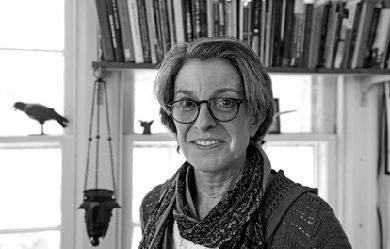
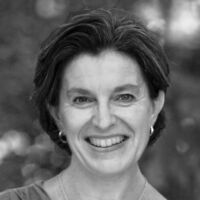
Claudia Emerson is an American poetess born on January 13, 1957 in Chatham, Virginia. She has won the 2006 Pulitzer Prize for her poetry collection Late Wife, and received several other awards. She has also written several poetry books. As of the Fall of 2013, she is teaching classes at Virginia Commonwealth University.
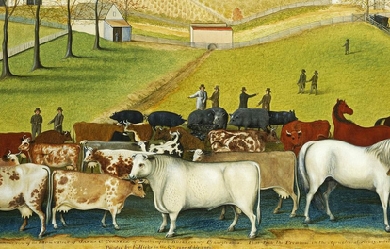
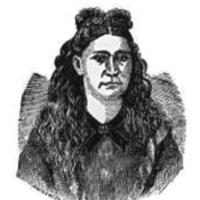
Julia Ann Moore, the “Sweet Singer of Michigan”, born Julia Ann Davis in Plainfield Township, Kent County, Michigan (December 1, 1847–June 5, 1920), was an American poet, or more precisely, poetaster. Like Scotland’s William McGonagall, she is famed chiefly for writing notoriously bad poetry. Biography Young Julia grew up on her family’s Michigan farm, the eldest of four children. When she was ten, her mother became ill, and Julia assumed many of her mother’s responsibilities. Her formal education was thereby limited. In her mid-teens, she started writing poetry and songs, mostly in response to the death of children she knew, but any newspaper account of disaster could inspire her. At age 17, she married Frederick Franklin Moore, a farmer. Julia ran a small store and, over the years, bore ten children, of whom six survived to adulthood. She continued to write poetry and songs. Moore’s first book of verse, The Sentimental Song Book was published in 1876 by C. M. Loomis of Grand Rapids, and quickly went into a second printing. A copy ended up in the hands of James F. Ryder, a Cleveland publisher, who republished it under the title The Sweet Singer of Michigan Salutes the Public. Ryder sent out numerous review copies to newspapers across the country, with a cover letter filled with low key mock praise. And so Moore received national attention. Following Ryder’s lead, contemporary reviews were amusedly negative. The Rochester Democrat wrote of Sweet Singer, that Shakespeare, could he read it, would be glad that he was dead …. If Julia A. Moore would kindly deign to shed some of her poetry on our humble grave, we should be but too glad to go out and shoot ourselves tomorrow. The Hartford Daily Times said that to meet such steady and unremitting demands on the lachrymal ducts one must be provided, as Sam Weller suspected Job Trotter was, ‘with a main, as is allus let on.’… The collection became a curious best-seller, though it is unclear whether this was due to public amusement with Moore’s poetry or genuine appreciation of the admittedly “sentimental” character of her poems. It was, more or less, the last gasp of that school of obituary poetry that had been broadly popular in the U. S. throughout the mid-19th century. Moore gave a reading and singing performance, with orchestral accompaniment, in 1877 at a Grand Rapids opera house. She managed to interpret jeering as criticism of the orchestra. Moore’s second collection, A Few Choice Words to the Public appeared in 1878, but found few buyers. Moore gave a second public performance in late 1878 at the same opera house. By then she had figured out that the praise directed to her was false and the jeering sincere. She began by admitting her poetry was “partly full of mistakes” and that “literary is a work very hard to do”. After the poetry and the laughter and jeering in response was over, Moore ended the show by telling the audience: You have come here and paid twenty-five cents to see a fool; I receive seventy-five dollars, and see a whole houseful of fools. Afterwards, her husband forbade her to publish any more poetry. Three more poems were eventually published, and she would write poems for friends. In 1880, she also published, in newspaper serialization, a short story “Lost and Found”, a strongly moralistic story about a drunkard, and a novella “Sunshine and Shadow”, a peculiar romance set in the American Revolution. The ending of “Sunshine and Shadow” was perhaps intended to be self-referential: the farmer facing foreclosure is gratefully rescued by his wife’s publishing her secret cache of fiction. According to some reports, though, her husband was not grateful, but embarrassed. Shamed or not, he moved the family 100 miles north to Manton in 1882. Moore’s notoriety was known in Manton, but the locals respected her, and did not cooperate with the occasional reporter trying to revisit the past. They were a successful business couple, he with an orchard and sawmill, she with a store. Her husband died in 1914. The next year, Julia republished “Sunshine and Shadow” in pamphlet form. She spent much of her widowhood “melancholy”, sitting on her porch. She died quietly in 1920. The news of her death was widely reported, sometimes with a light touch. On her poetry Some comparison to William McGonagall is worth making. Unlike McGonagall, Moore commanded a fairly wide variety of meters and forms, albeit like Emily Dickinson the majority of her verse is in the ballad meter. Like McGonagall, she held a maidenly bluestocking’s allegiance to the Temperance movement, and frequently indited odes to the joys of sobriety. Most importantly, like McGonagall, she was drawn to themes of accident, disaster, and sudden death; as has been said of A. E. Housman’s A Shropshire Lad, in her pages you can count the dead and wounded. Edgar Wilson Nye called her “worse than a Gatling gun”. Here, she is inspired by the Great Chicago Fire: The great Chicago Fire, friends, Will never be forgot; In the history of Chicago It will remain a darken spot. It was a dreadful horrid sight To see that City in flames; But no human aid could save it, For all skill was tried in vain. Her less morbid side is on display when she hymns Temperance Reform Clubs: Many a man joined the club That never drank a drachm, Those noble men were kind and brave They care not for the slang— The slang they meet on every side: “You’re a reform drunkard, too; You’ve joined the red ribbon brigade, Among the drunkard crew.” Despite her acknowledgment that “Literary is a work very difficult to do,” she did not approve of the life of Byron: The character of “Lord Byron” Was of a low degree, Caused by his reckless conduct, And bad company. He sprung from an ancient house, Noble, but poor, indeed. His career on earth, was marred By his own misdeeds. Influence Mark Twain was a self-described fan of Moore (though not for the reasons Moore would have liked). Twain alluded to her work in Following the Equator, and it is widely assumed that Moore served as a literary model for the character of Emmeline Grangerford in Adventures of Huckleberry Finn. Grangerford’s funereal ode to Stephen Dowling Botts: O no. Then list with tearful eye, Whilst I his fate do tell. His soul did from this cold world fly By falling down a well. They got him out and emptied him; Alas it was too late; His spirit was gone for to sport aloft In the realms of the good and great. (Twain) is not far removed from Moore’s poems on subjects like Little Libbie: One more little spirit to Heaven has flown, To dwell in that mansion above, Where dear little angels, together roam, In God’s everlasting love. (Moore) Moore was also the inspiration for comic poet Ogden Nash, as he acknowledged in his first book, and whose daughter reported that her work convinced Nash to become a “great bad poet” instead of a “bad good poet”. The Oxford Companion to American Literature describes Nash as using Moore’s hyperdithyrambic meters, pseudo-poetic inversions, gangling asymmetrical lines, extremely pat or elaborately inexact rimes, parenthetical dissertations, and unexpected puns. Selections of Moore appeared in D. B. Wyndham-Lewis and Charles Lee’s famous Stuffed Owl anthology, and in other collections of bad poetry. Most of her poetry was reprinted in a 1928 edition, which can be found online. Her complete poetry and prose, with biography, notes, and references, can be found in the Riedlinger edited collection Mortal Refrains. Most poetry collections reprint the latest, “best”, versions of their contents. Riedlinger has adopted the opposite philosophy. Moore has been grouped into the Western Michigan School of Bad Versemakers. Her local contemporaries—including Dr. William Fuller, S.H. Ewell, J.B. Smiley, and Fred Yapple—do not appear to have had relationships with each other, but their proximity and similar penchant for exceptionally laughable verse have led to their posthumous grouping together.
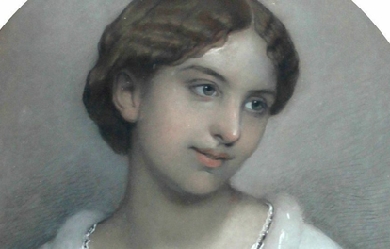

Augusta Webster (30 January 1837 - 5 September 1894) born in Poole, Dorset as Julia Augusta Davies, was an English poet, dramatist, essayist, and translator. The daughter of Vice-admiral George Davies and Julia Hume she spent her younger years on board the ship he was stationed, the Griper. She studied Greek at home, taking a particular interest in Greek drama, and went on to study at the Cambridge School of Art. She published her first volume of poetry in 1860 under the pen name Cecil Homes. In 1863 she married Thomas Webster, a fellow at Trinity College, Cambridge. They had a daughter, Augusta Georgiana, who married Reverend George Theobald Bourke, a younger son of the Joseph Bourke, 3rd Earl of Mayo. Much of Webster’s writing explored the condition of women, and she was a strong advocate of women’s right to vote, working for the London branch of the National Committee for Women’s Suffrage. Webster was the first female writer to hold elective office, having been elected to the London School Board in 1879 and 1885. In 1885 she travelled to Italy in an attempt to improve her failing health. She died on September 5, 1894, at 57. During her lifetime her writing was acclaimed and she was considered by some the successor to Elizabeth Barrett Browning. After her death, however, her reputation quickly declined. Since the mid-1990s she has gained increasing critical attention from scholars such as Isobel Armstrong, Angela Leighton, and Christine Sutphin, Her best-known poems include three long dramatic monologues spoken by women: “A Castaway,” “Circe”, and “The Happiest Girl In The World”, as well as a posthumously published sonnet-sequence, “Mother and Daughter”.
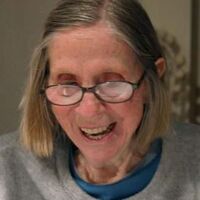
In 1920, Barbara Guest was born in Wilmington, North Carolina. She attended the University of California, Los Angeles, and the University of California, Berkeley, from which she graduated in 1943. Early in her career, she was known predominantly as a writer of the New York School, a group of poets that included John Ashbery, Kenneth Koch, Frank O'Hara, and James Schuyler. The New York School represented a rejection of the dominant school of confessional poetry and was deeply influenced by the action painters of the 1950s and 1960s, particularly Jackson Pollock, Willem de Kooning, and Larry Rivers. Throughout the 1950s, Guest worked as a writer for Art News magazine, and she has continued to write articles and reviews for many art magazines. The tension between the lyrical (or musical) and the graphic (or material) is a defining feature of her work, and her poetry often utilizes space as a way to draw attention to language. Guest has published numerous collections of poetry, among them The Red Gaze (Wesleyan University Press, 2005); Miniatures and Other Poems (2002), Symbiosis (1999), Defensive Rapture (1994), Fair Realism (1989), Musicality (1988), The Nude (1986), Quilts (1980), and Biography (1980). She is also the author of several plays and a novel, Seeking Air (1978). Her honors include the Robert Frost Medal for Distinguished Lifetime Achievement from the Poetry Society of America, the Longwood Award, a San Francisco State award for poetry, the Lawrence Lipton Award for Literature, the Columbia Book Award, and a grant from The National Endowment for the Arts. She lived in Berkeley, California. Guest died on February 15, 2006. A Selected Bibliography Poetry The Blue Stairs (1968) Moscow Mansions (1973) Biography (1980) The Nude (1986) Musicality (1988) Fair Realism (1989) Defensive Rapture (1994) Symbiosis (1999) Miniatures and Other Poems (2002) The Red Gaze (2005) Prose Seeking Air (1978) The Confetti Trees (1999) Rocks on a Platter: Notes on Literature (1999) Plays The Ladies Choice (1953) The Office (1963) Port (1965)
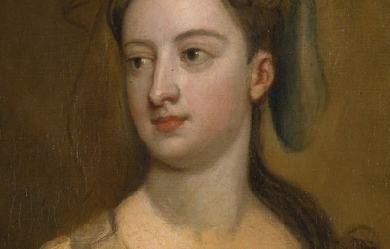
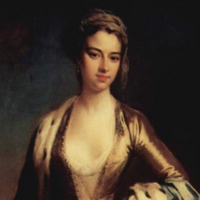
Lady Mary Wortley Montagu (baptized 26 May 1689– 21 August 1762) was an English aristocrat, letter writer and poet. Lady Mary is today chiefly remembered for her letters, particularly her letters from travels to the Ottoman Empire, as wife to the British ambassador to Turkey, which have been described by Billie Melman as “the very first example of a secular work by a woman about the Muslim Orient”. Aside from her writing, Lady Mary is also known for introducing and advocating for smallpox inoculation to Britain after her return from Turkey. Her writings usually address and challenge the hindering contemporary social attitudes towards women and their intellectual and social growth. Early life and education Lady Mary Wortley Montagu, Mary Pierrepont, was born in May 1689; her baptism took place on 26 May, at a few days old, at St. Paul’s Church in Covent Garden. She was the eldest child of Evelyn Pierrepont, 1st Duke of Kingston-upon-Hull, and his first wife, Mary (Fielding) Pierrepont. Her mother had three more children, two girls and a boy, before dying in October 1692. The children were raised by their Pierrepont grandmother until Mary was nine years old. Lady Mary was then passed to the care of her father upon her grandmother’s death. She began her education in her father’s home. Family holdings were extensive, including Thoresby Hall and Holme Pierrepont Hall in Nottinghamshire, and a house in West Dean in Wiltshire. To supplement the instruction of a despised governess, Lady Mary used the library in her father’s mansion, Thoresby Hall in Nottinghamshire, to “steal” her education, teaching herself Latin, a language reserved for men at the time. By 1705, at the age of fourteen or fifteen, Mary Pierrepont had written two albums filled with poetry, a brief epistolary novel, and a prose-and-verse romance modeled after Aphra Behn’s Voyage to the Isle of Love (1684). She also corresponded with two bishops, Thomas Tenison and Gilbert Burnet. Marriage and embassy to Ottoman Empire By 1710 Lady Mary had two possible suitors to choose from: Edward Wortley Montagu and Clotworthy Skeffington. Lady Mary corresponded with Edward Wortley Montagu via letters from 28 March 1710 to 2 May 1711. After May 1711 there was a break in contact between Lady Mary and Edward Wortley Montagu. Mary’s father, now Marquess of Dorchester, rejected Wortley Montagu as a prospect because he refused to entail his estate on a possible heir. Her father pressured her to marry Clotworthy Skeffington, heir to an Irish peerage. In order to avoid marriage to Skeffington, she eloped with Wortley. The marriage license is dated 17 August 1712, the marriage probably took place on 23 August 1712. The early years of Lady Mary Wortley Montagu’s married life were spent in the country. She had a son, Edward Wortley Montagu the younger, on 16 May 1713, in London. A couple of months later, on 1 July 1713 Lady Mary’s brother, aged twenty, died of smallpox and left behind two children. On 13 October 1714, her husband accepted post as Junior Commissioner of Treasury. When Lady Mary joined him in London, her wit and beauty soon made her a prominent figure at court. She was among the society of George I and the Prince of Wales, and counted amongst her friends Molly Skerritt, Lady Walpole, John, Lord Hervey, Mary Astell, Sarah Churchill, Duchess of Marlborough, Alexander Pope, John Gay, and Abbé Antonio Conti. In December 1715, Lady Mary contracted smallpox. She survived, but while she was ill someone circulated the satirical “court eclogues” she had been writing. One of the poems was read as an attack on Caroline, Princess of Wales, in spite of the fact that the “attack” was voiced by a character who was herself heavily satirized. In 1716, Edward Wortley Montagu was appointed Ambassador at Istanbul. In August 1716, Lady Mary accompanied him to Vienna, and thence to Adrianople and Istanbul. He was recalled in 1717, but they remained at Istanbul until 1718. While away from England, the Wortley Montagu’s had a daughter on 19 January 1718, who would grow up to be Mary, Countess of Bute. After an unsuccessful delegation between Austria and Turkey/Ottoman Empire, they set sail for England via the Mediterranean, and reached London on 2 October 1718. The story of this voyage and of her observations of Eastern life is told in Letters from Turkey, a series of lively letters full of graphic descriptions; Letters is often credited as being an inspiration for subsequent female travelers/writers, as well as for much Orientalist art. During her visit she was sincerely charmed by the beauty and hospitality of the Ottoman women she encountered, and she recorded her experiences in a Turkish bath. She also recorded a particularly amusing incident in which a group of Turkish women at a bath in Sofia, horrified by the sight of the stays she was wearing, exclaimed that "the husbands in England were much worse than in the East, for [they] tied up their wives in little boxes, the shape of their bodies". Lady Mary wrote about misconceptions previous travelers, specifically male travelers, had recorded about the religion, traditions and the treatment of women in the Ottoman Empire. Her gender and class status provided her with access to female spaces, that were closed off to males. Her personal interactions with Ottoman women enabled her to provide a more accurate account of Turkish women, their dress, habits, traditions, limitations and liberties. Lady Mary returned to the West with knowledge of the Ottoman practice of inoculation against smallpox, known as variolation. Ottoman smallpox inoculation Lady Mary Wortley Montagu defied convention most memorably by introducing smallpox inoculation to Western medicine after witnessing it during her travels and stay in the Ottoman Empire. In the Ottoman Empire, she visited the women in their segregated zenanas, making friends and learning about Turkish customs. There she witnessed the practice of inoculation against smallpox—variolation—which she called engrafting, and wrote home about it a number of her letters. Variolation used live smallpox virus in the pus taken from a smallpox blister in a mild case of the disease and introduced it into scratched skin of a previously uninfected person to promote immunity to the disease. Lady Mary’s brother had died of smallpox in 1713 and her own famous beauty had been marred by a bout with the disease in 1715. Lady Mary was eager to spare her children, thus, in March 1718 she had her nearly five-year-old son inoculated with the help of Embassy surgeon Charles Maitland. On her return to London, she enthusiastically promoted the procedure, but encountered a great deal of resistance from the medical establishment, because it was an Oriental folk treatment process. In April 1721, when a smallpox epidemic struck England, she had her daughter inoculated by Charles Maitland, the same physician who had inoculated her son at the Embassy in Turkey, and publicized the event. This was the first such operation done in Britain. She persuaded Princess Caroline to test the treatment. In August 1721, seven prisoners at Newgate Prison awaiting execution were offered the chance to undergo variolation instead of execution: they all survived and were released. Controversy over smallpox inoculation intensified, however, Caroline, Princess of Wales was convinced. The Princess’s two daughters were successfully inoculated in April 1722 by French-born surgeon Claudiius Amyand. In response to the general fear of inoculation, Lady Mary, under a pseudonym, wrote and published an article describing and advocating in favor of inoculation in September 1722. In later years, Edward Jenner, who was 13 years old when Lady Mary died, developed the much safer technique of vaccination using cowpox instead of smallpox. As vaccination gained acceptance, variolation gradually fell out of favor. Later years After returning to England, Lady Mary took less interest in court compared to her earlier years. Instead she was more focused on the upbringing of her children, reading, writing and editing her travel letters—which she then chose not to publish. Before starting for the East Lady Mary Wortley Montagu had met Alexander Pope, and during her Embassy travels with her husband, they wrote each other a series of letters. While Pope may have been fascinated by her wit and elegance, Lady Mary’s replies to his letters reveal that she was not equally smitten. Very few letters passed between them after Lady Mary’s return to England, and various reasons have been suggested for the subsequent estrangement. In 1728, Pope attacked Lady Mary in his Dunciad inaugurating a decade in which most of his publications made some sort of allegation against her. Lady Mary went through a series of trials with her children. In 1726 and 1727, Lady Mary’s son ran away from Westminster School several times. He was entrusted to a tutor with strict orders to keep young Edward Montagu abroad. In later years her son managed to return to England without permission and continued to have a strained relationship with both his parents. In August 1736, Lady Mary’s daughter, married John Stuart, 3rd Earl of Bute, despite her parent’s disapproval of the match. The same year Lady Mary met and fell in love with Francesco Algarotti, Count Algarotti, competing with an equally smitten John Hervey for the Count’s affections. Lady Mary wrote many letters to Algarotti in English and in French after his departure from England in September 1736. In July 1739 Lady Mary departed England ostensibly for health reasons declaring her intentions to winter in the south of France. In reality, she left to visit and live with Algarotti in Venice. Their relationship ended in 1741 after Lady Mary and Algarotti were both on diplomatic mission in Turin. Lady Mary stayed abroad and traveled extensively. After traveling to Venice, Florence, Rome, Genoa and Geneva, she finally settled in Avignon in 1742. She left Avignon in 1746 for Brescia, where she fell ill and stayed for nearly a decade, leaving for Lovere in 1754. After August 1756, she resided in Venice and Padua and saw Algarotti again in November. Lady Mary exchanged letters with her daughter, Lady Bute, discussing topics such as philosophy, literature, and the education of girls, as well as conveying details of her geographical and social surroundings. Lady Mary received news of her husband Edward Wortley Montagu’s death in 1761 and left Venice for England. En route to London, she handed her Embassy Letters to the Rev. Benjamin Sowden of Rotterdam, for safe keeping and “to be dispos’d of as he thinks proper”. Lady Mary reached London in January 1762, and died in the year of her return, on 21 August 1762. Important works and literary place Although Lady Mary Wortley Montagu is now best known for her Embassy Letters, she wrote poetry and essays as well. A number of Lady Mary’s poems and essays were printed in her lifetime, either without or with her permission, in newspapers, in miscellanies, and independently. Montagu did not intend to publish her poetry, but it did circulate widely, in manuscript, among members of her own social circle. Lady Mary was highly suspicious of any idealizing literary language. She wrote most often in heroic couplets, a serious poetic form to employ, and, according to Susan Staves,"excelled at “answer poems.”. Some of her widely anthologized poems include “Constantinople” and “Epistle from Mrs. Yonge to her Husband.” “Constantinople,” written January 1718, is a beautiful poem in heroic couplets describing Britain and Turkey through human history, and representing the state of mind “of knaves, coxcombs, the mob, and party zealous—all characteristic of the London of her time.”. “Epistle from Mrs. Yonge to her Husband,” written 1724, stages a letter from Mrs. Yonge to her libertine husband and exposes the social double standard which led to the shaming and distress of Mrs. Yonge after her divorce. In 1737 and 1738, Lady Mary published anonymously a political periodical called the Nonsense of Common-Sense, supporting the Robert Walpole government (the title was a reference to a journal of the liberal opposition entitled Common Sense). She wrote six Town Eclogues. She wrote notable letters describing her travels through Europe and the Ottoman Empire; these appeared after her death in three volumes. Lady Mary corresponded with Anne Wortley and wrote courtship letters to her future husband Edward Wortley Montagu, as well as love letters to Francesco Algarotti. She corresponded with notable writers, intellectuals and aristocrats of her day. She wrote gossip letters and letters berating the vagaries of fashionable people to her sister, Lady Mar, and exchanged intellectual letters with her adult daughter, Lady Bute. Although, not published during her lifetime, her letters from Turkey were clearly intended for print. She revised them extensively and gave a transcript to the Rev. Benjamin Sowden in Rotterdam in 1761. During the twentieth century Lady Mary’s letters were edited separately from her essays, poems and plays. Montagu’s Turkish letters were to prove an inspiration to later generations of European women travelers and writers. In particular, Montagu staked a claim to the authority of women’s writing, due to their ability to access private homes and female-only spaces where men were not permitted. The title of her published letters refers to “Sources that Have Been Inaccessible to Other Travellers”. The letters themselves frequently draw attention to the fact that they present a different (and, Montagu asserts, more accurate) description than that provided by previous (male) travelers: “You will perhaps be surpriz’d at an Account so different from what you have been entertaind with by the common Voyage-writers who are very fond of speaking of what they don’t know.”. Montagu provides an intimate description of the women’s bathhouse in Sofia, in which she derides male descriptions of the bathhouse as a site for unnatural sexual practices, instead insisting that it was “the Women’s coffee house, where all the news of the Town is told, Scandal invented, etc”. However, Montagu’s detailed descriptions of nude Oriental beauties provided inspiration for male artists such as Ingres, who restored the explicitly erotic content that Montagu had denied. In general, Montagu dismisses the quality of European travel literature of the 18th century as nothing more than "trite observations…superficial…[of] boys [who] only remember where they met with the best wine or the prettyest women.". Montagu’s Turkish letters were frequently cited by imperial women travelers, more than a century after her journey. Such writers cited Montagu’s assertion that women travelers could gain an intimate view of Turkish life that was not available to their male counterparts. However, they also added corrections or elaborations to her observations. In 1739 a book was printed by an unknown author under the pseudonym “Sophia, a person of quality”, titled Woman not Inferior to Man. This book is often attributed to Lady Mary. Her Letters and Works were published in 1837. Montagu’s octogenarian granddaughter Lady Louisa Stuart contributed to this, anonymously, an introductory essay called Biographical Anecdotes of Lady M. W. Montagu, from which it was clear that Stuart was troubled by her grandmother’s focus on sexual intrigues and did not see Lady Mary Wortley Montagu’s Account of the Court of George I at his Accession as history. However, Montagu’s historical observations, both in the “Anecdotes” and the “Turkish Embassy Letters,” prove quite accurate when put in context. Despite the availability of her work in print and the revival efforts of Feminist scholars, the complexity and brilliance of Lady Mary Wortley Montagu’s extensive body of work has not yet been recognized to the fullest.
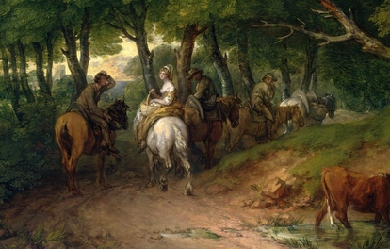
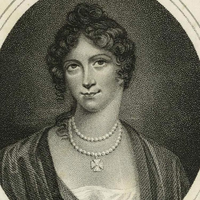
Helen Maria Williams (17 June 1759– 15 December 1827) was a British novelist, poet, and translator of French-language works. A religious dissenter, she was a supporter of abolitionism and of the ideals of the French Revolution; she was imprisoned in Paris during the Reign of Terror, but nonetheless spent much of the rest of her life in France. A controversial figure in her own time, the young Williams was favourably portrayed in a 1787 poem by William Wordsworth, but (especially at the height of the French Revolution) she was portrayed by other writers as irresponsibly politically radical and even as sexually wanton. Life She was born on 17 June 1759 in London to a Scottish mother, Helen Hay, and a Welsh army officer father, Charles Williams. Her father died when she was eight; the remnant of the family moved to Berwick-upon-Tweed, where she had what she herself would describe in the preface to a 1786 book of poems as “a confined education”. In 1781 she moved to London and met Andrew Kippis, who would have great influence on her literary career and political views and brought her into contact with the leading London intellectuals of her time. Her 1786 Poems touch on topics ranging from religion to a critique of Spanish colonial practices. She allied herself with the cult of feminine sensibility, deploying it politically in opposition to war ("Ode on the Peace", a 1786 poem about Peru) and slavery (the abolitionist “Poem on the Bill Lately Passed for Regulating the Slave Trade”, 1788). In the context of the Revolution Controversy, she came down on the side of the revolutionaries in her 1790 novel Julia and defied convention by travelling alone to revolutionary France, where she was hosted by Mme. Du Fossé, who had earlier, in London, given her lessons in French. Her letters from France marked a turn from being primarily a writer of poetry to one of prose. She enthusiastically attended the Fête de la Fédération on the anniversary of the storming of the Bastille and returning briefly to London in 1791 was a staunch, though not completely uncritical, defender of the Revolution. Returning to France in July 1791, she published a poem “A Farewell for two Years to England”; in fact she briefly visited England again in 1792, but only to persuade her mother and her sisters, Cecilia and Persis, to join her in France just as the country was moving toward the more violent phases of its revolution. After the September Massacres of 1792, she allied herself with the Girondists; as a saloniere, she also hosted Mary Wollstonecraft, Francisco de Miranda and Thomas Paine. After the violent downfall of the Gironde and the rise of the Reign of Terror, she and her family were thrown into the Luxembourg prison where she was allowed to continue working on translations of French-language works into English, including what would prove to be a popular translation of Bernardin St. Pierre’s novel Paul et Virginie, to which she appended her own prison sonnets. Upon her release, she travelled with John Hurford Stone to Switzerland. She was harshly criticised for this since Stone, separated from an unfaithful wife, was still legally a married man; the subsequent history of Williams and Stone’s relationship only tended to confirm the rumours. Nonetheless, her few poems from this period continue to express Dissenting piety and were published in volumes with those of other religiously like-minded poets. In 1798, she published A Tour in Switzerland, which included an account of her travels, political commentary, and the poem “A Hymn Written Amongst the Alps”. Williams’ 1801 Sketches of the State of Manners and Opinions in the French Republic showed a continued attachment to the original ideals of the French Revolution but a growing disenchantment with the rise of Napoleon; as emperor, he would declare her ode “The Peace signed between the French and the English” (also known as the “Ode on the Peace of Amiens”) to be treasonable to France. Nonetheless, he proved to be, in this respect, more lenient than the revolutionary government had been to this now-famous international literary figure: she spent a single day in prison and continued to live and write in Paris. After the Bourbon Restoration, she became a naturalised French citizen in 1818; nonetheless, in 1819 she moved to Amsterdam to live with a nephew she had helped raise. However, she was unhappy in Amsterdam and soon returned to Paris, where, until her death in 1827, she continued to be an important interpreter of French intellectual currents for the English-speaking world.
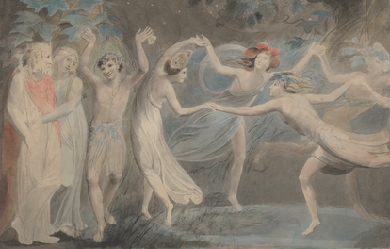
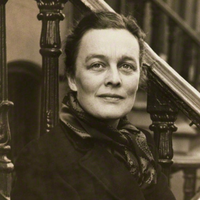
Kathleen Jessie Raine CBE (14 June 1908– 6 July 2003) was a British poet, critic and scholar, writing in particular on William Blake, W. B. Yeats and Thomas Taylor. Known for her interest in various forms of spirituality, most prominently Platonism and Neoplatonism, she was a founder member of the Temenos Academy. Life Kathleen Raine was born in Ilford, Essex (now part of London). Her mother was from Scotland and her father was born in Wingate, County Durham. The couple had met as students at Armstrong College in Newcastle upon Tyne. Raine spent part of World War I, 'a few short years’, with her Aunty Peggy Black at the Manse in Great Bavington Northumberland. She commented, “I loved everything about it.” For her it was an idyllic world and is the declared foundation of all her poetry. Raine always remembered Northumberland as Eden: “In Northumberland I knew myself in my own place; and I never 'adjusted’ myself to any other or forgot what I had so briefly but clearly seen and understood and experienced.” This period is described in the first book of her autobiography, Farewell Happy Fields (1973). Raine noted that poetry was deeply ingrained in the daily lives of her maternal ancestors: "On my mother’s side I inherited Scotland’s songs and ballads…sung or recited by my mother, aunts and grandmothers, who had learnt it from their mothers and grandmothers… Poetry was the very essence of life." Raine heard and read the Bible daily at home and at school, coming to know much of it by heart. Her father was an English master at County High School in Ilford. He had studied the poetry of Wordsworth for his M.Litt thesis and had a passion for Shakespeare and Raine saw many Shakespearean plays as a child. From her father she gained a love of etymology and the literary aspect of poetry, the counterpart to her immersion in the poetic oral traditions. She wrote that for her poetry was "not something invented but given…Brought up as I was in a household where poets were so regarded it naturally became my ambition to be a poet". She confided her ambition to her father who was sceptical of the plan. “To my father” she wrote “poets belonged to a higher world, to another plane; to say one wished to become a poet was to him something like saying one wished to write the fifth gospel”. Her mother encouraged Raine’s poetry from babyhood. Raine was educated at County High School, Ilford, and then read natural sciences, including botany and zoology, on an Exhibition at Girton College, Cambridge, receiving her master’s degree in 1929. While in Cambridge she met Jacob Bronowski, William Empson, Humphrey Jennings and Malcolm Lowry. In later life she was a friend and colleague of the kabbalist author and teacher, Z’ev ben Shimon Halevi. Raine married Hugh Sykes Davies in 1930. She left Davies for Charles Madge and they had two children together, but their marriage also broke up. She also held an unrequited passion for Gavin Maxwell. The title of Maxwell’s most famous book Ring of Bright Water, subsequently made into a film of the same name starring Virginia McKenna, was taken from a line in Raine’s poem “The Marriage of Psyche”. The relationship with Maxwell ended in 1956 when Raine lost his pet otter, Mijbil, indirectly causing the animal’s death. Raine held herself responsible, not only for losing Mijbil but for a curse she had uttered shortly beforehand, frustrated by Maxwell’s homosexuality: “Let Gavin suffer in this place as I am suffering now.” Raine blamed herself thereafter for all Maxwell’s misfortunes, beginning with Mijbil’s death and ending with the cancer from which he died in 1969. From 1939 to 1941, Raine and her children shared a house at 49a Wordsworth Street in Penrith with Janet Adam Smith and Michael Roberts and later lived in Martindale. She was a friend of Winifred Nicholson. Raine’s two children were Anna Hopwell Madge (born 1934) and James Wolf Madge (1936–2006). In 1959, James married Jennifer Alliston, the daughter of Raine’s friend, architect and town planner Jane Drew with architect James Alliston. Drew was a direct descendant of the neoplatonist Thomas Taylor whom Raine studied and wrote about. Thus a link was made between Raine and Taylor by the two children of her son’s marriage. At the time of her death, following an accident, Raine resided in London.
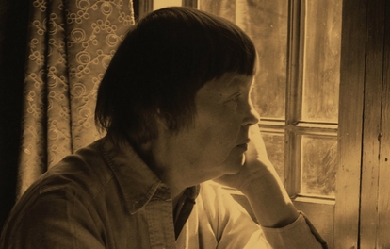
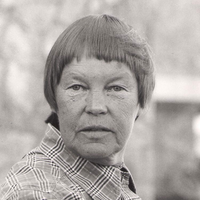
Anna Thilda May “May” Swenson (28 May 1913– 4 December 1989) was an American poet and playwright. She is considered one of the most important and original poets of the 20th century, as often hailed by the noted critic Harold Bloom. The first child of Margaret and Dan Arthur Swenson, she grew up as the eldest of ten children in a Mormon household where Swedish was spoken regularly and English was a second language. As a lesbian, she was somewhat shunned by her family for religious reasons. Much of her later poetry works were devoted to children. She also translated the work of contemporary Swedish poets, including the selected poems of Nobel laureate Tomas Tranströmer.
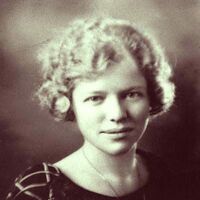
Lorine Faith Niedecker (English: pronounced Needecker) (May 12, 1903 – December 31, 1970) was a Wisconsin poet and the only woman associated with the Objectivist poets. She is widely credited for demonstrating how an Objectivist poetic could handle the personal as subject matter. Niedecker was born on Black Hawk Island near Fort Atkinson, Wisconsin to Theresa (Daisy) Kunz and Henry Niedecker and lived most of her life in rural isolation. She grew up surrounded by the sights and sounds of the river until she moved to Fort Atkinson to attend school. This world of birds, trees, water and marsh was to inform her poetry for the rest of her life. On graduating from high school in 1922, she went to Beloit College to study literature but left after two years because her father was no longer able to pay her tuition. She devoted herself to caring for her ailing deaf mother, who was deeply depressed by her husband's flagrant affair with a neighbor woman. Niedecker married Frank Hartwig in 1928 but this relationship lasted only two years. Hartwig's fledgling road construction business foundered during the onset of the Great Depression while Lorine lost her job at the Fort Atkinson Library. The two separated in 1930 but were not legally divorced until 1942. Early writings Niedecker's earliest poetry was marked by her reading of the Imagists, whose work she greatly admired and of surrealism. In 1931, she read the Objectivist issue of Poetry. She was fascinated by what she saw and immediately wrote to Louis Zukofsky, who had edited the issue, sending him her latest poems. This was the beginning of what proved to be a most important relationship for her development as a poet. Zukofsky suggested sending them to Poetry, where they were accepted for publication. Suddenly, Niedecker found herself in direct contact with the American poetic avant-garde. Near the end of 1933, Niedecker visited Zukofsky in New York City for the first time and became pregnant with his child. He insisted that she have an abortion, which she did, although they remained friends and continued to carry on a mutually beneficial correspondence following Niedecker's return to Fort Atkinson. From the mid 1930s, Niedecker moved away from surrealism and started writing poems that engaged more directly with social and political realities and on her own immediate rural surroundings. Her first book, New Goose (1946), collected many of these poems. Neglect Niedecker was not to publish another book for fifteen years. In 1949, she began work on a poem sequence called For Paul, named for Zukofsky's son. Unfortunately, Zukofsky was uncomfortable with what he viewed as the overly personal and intrusive nature of the content of the 72 poems she eventually collected under this title and discouraged publication. Partly because of her geographical isolation, even magazine publication was not easily available and in 1955 she claimed that she had published work only six times in the previous ten years. Late flowering The 1960s saw a revival of interest in Niedecker's work. Wild Hawthorn Press and Fulcrum Press, both British-based, published books and magazine publication became regular. She was also befriended by a number of poets, including Cid Corman, Basil Bunting and several younger British and US poets who were interested in reclaiming the modernist heritage. Her books published in the last few decades of her life included My Friend Tree, T & G: The Collected Poems, 1936–1966, North Central, and My Life By Water. Encouraged by this interest, Niedecker started writing again. She had previously earned her living scrubbing hospital floors in Fort Atkinson, "reading proof" at a local magazine, renting cottages and living in near-poverty for years. However, her marriage in May 1963 to Albert Millen, an industrial painter at Ladish Drop Forge on Milwaukee's south side, brought financial stability back into her life. When Millen retired in 1968, the couple moved back to Blackhawk Island, taking up residence in a small cottage Lorine had built on property she inherited from her father. Niedecker died in 1970 from a cerebral hemorrhage, leaving behind several unpublished typescripts. Many other Niedecker papers were burned by Millen, who said he did so at Niedecker's request. Her name was added to her parents' headstone which uses the original spelling of the family name, Neidecker. Lorine had her name changed to the Niedecker spelling when she was in her twenties. The primary Niedecker archives are in the Dwight Foster Public Library (which inherited Niedecker's personal library) and the Hoard Museum in Fort Atkinson (which holds a collection of Niedecker's papers, as preserved and donated by her neighbor and close friend, Gail Roub). Niedecker's comprehensive Collected Works, edited by Jenny Penberthy, were published by the University of California Press in 2002. A centennial celebration of Niedecker's life and work, held in Milwaukee and Fort Atkinson in 2003, included treks to her two Rock River-edged homes on Black Hawk Island and symposium sessions including presentations by scholars and poets. Corman, Niedecker's literary executor who lived most of his creative life in Japan, made his last appearance in the United States during this event.
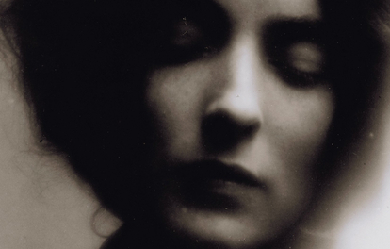
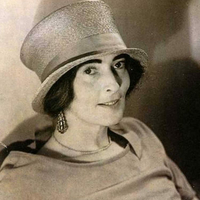
Mina Loy (born Mina Gertrude Löwy; 27 December 1882 – 25 September 1966), was a British artist, writer, poetess, playwright, novelist, futurist, feminist, designer of lamps, and bohemian. She was one of the last of the first generation modernists to achieve posthumous recognition. Loy was born in London. She was the daughter of a Hungarian Jewish father and an English Protestant mother. Loy’s first hobby was art. She studied painting in Munich at St. John’s Wood School in 1897 for two years.
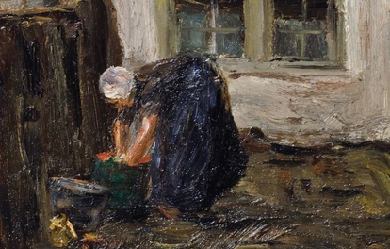
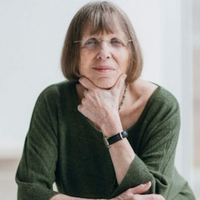
Linda Pastan (born May 27, 1932 in New York) is an American poet of Jewish background. From 1991–1995 she was Poet Laureate of Maryland. She is known for writing short poems that address topics like family life, domesticity, motherhood, the female experience, aging, death, loss and the fear of loss, as well as the fragility of life and relationships. Her most recent collections of poetry include Insomnia, Traveling Light, and Queen of a Rainy Country. Life Pastan has published at least 12 books of poetry and a number of essays. Her awards include the Dylan Thomas Award, a Pushcart Prize, the Alice Fay di Castagnola Award (Poetry Society of America), the Bess Hokin Prize (Poetry Magazine), the 1986 Maurice English Poetry Award (for A Fraction of Darkness), the Charity Randall Citation of the International Poetry Forum, and the 2003 Ruth Lilly Poetry Prize. She also received the Radcliffe College Distinguished Alumnae Award. Two of her collections of poems were nominated for the National Book Award and one for the Los Angeles Times Book Prize. Family As of 2011, she lives in Potomac, Maryland with her husband Ira Pastan, an accomplished physician and researcher. She is the mother of novelist Rachel Pastan; Washington, D.C. chef and restaurateur Peter Pastan; and Atlanta nephrologist Stephen Pastan.
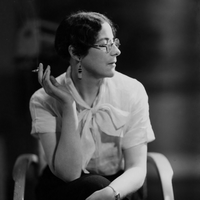
Sylvia Townsend Warner (6 December 1893– 1 May 1978) was an English novelist and poet. She also made a contribution to musicology as a young woman. Life Sylvia Nora Townsend Warner was born at Harrow on the Hill, Middlesex, the only child of George Townsend Warner and his wife Eleanor “Nora” Mary (née Hudleston). Her father was a house-master at Harrow School and was, for many years, associated with the prestigious Harrow History Prize which was renamed the Townsend Warner History Prize in his honour, after his death in 1916. As a child, Townsend Warner was home-schooled by her father. She enjoyed a seemingly idyllic childhood in rural Devonshire, but was strongly affected by her father’s death. She moved to London and worked in a munitions factory at the outbreak of World War I. Warner was friendly with a number of the “Bright young things” of the 1920s. Her first major success was the novel Lolly Willowes. In 1923, she met T. F. Powys, whose writing influenced her own and whose work she in turn encouraged. It was at Powys’ home that Warner, in 1930, first met Valentine Ackland, a young poet; the two women fell in love and settled at Frome Vauchurch, Dorset. Alarmed by the growing threat of fascism, they were active in the Communist Party, and in 1937 visited Valencia and Benicàssim, in Spain, on behalf of the Red Cross during the Civil War. They lived together from 1930 until Ackland’s death in 1969. Ackland and Warner are buried together at St Nicholas, Chaldon Herring, Dorset. Warner’s political engagement continued for the rest of her life, even after she became disillusioned with communism. Work Early in her career Warner researched 15th and 16th century music. From 1917 she was in regular employment as one of the editors of Tudor Church Music, ten volumes published by Oxford University Press in the 1920s with the support of the Carnegie UK Trust. She obtained the work through the influence of her lover and music teacher Sir Percy Buck, who was on the editorial committee. The lead editor was initially Sir Richard Terry, who as the Master of Music at Westminster Cathedral, had been a pioneer in the revival of Tudor vocal repertoire. Warner was involved in travelling to study source material and in transcribing the music into modern musical notation. Warner also published on the subject of musical notation including a contribution to the Oxford History of Music (in the introductory volume of 1929). In 1934 she published a joint collection of poems with Ackland, Whether a Dove or a Seagull. She was encouraged to write fiction by David Garnett. Warner’s novels included Lolly Willowes (1926), Mr Fortune’s Maggot (1927), Summer Will Show (1936), and The Corner That Held Them (1948). Recurring themes are evident in a number of her works. These include a rejection of Christianity (in Mr Fortune’s Maggot, and in Lolly Willowes, where the protagonist becomes a witch); the position of women in patriarchal societies (Lolly Willowes, Summer Will Show, The Corner that Held Them); ambiguous sexuality, or bisexuality (Lolly Willowes, Mr Fortune’s Maggot, Summer Will Show); and lyrical descriptions of landscape. Mr Fortune’s Maggot, about a missionary in the Pacific Islands, has been described as a “satirical, anti-imperialist novel”. In Summer Will Show, the heroine, Sophia Willoughby, travels to Paris during the 1848 Revolution and falls in love with a woman. Warner’s short stories include the collections A Moral Ending and Other Stories, The Salutation, More Joy in Heaven, The Cat’s Cradle Book, A Garland of Straw, The Museum of Cheats. Winter in the Air, A Spirit Rises, A Stranger with a Bag, The Innocent and the Guilty, and One Thing Leading to Another. Her final work was a series of linked short stories set in the supernatural Kingdoms of Elfin. Many of these stories were published in The New Yorker. In addition to fiction, Warner wrote anti-fascist articles for such leftist publications as Time and Tide and Left Review. After the death of the novelist T. H. White, Warner was given access to his papers. She published a biography which The New York Times declared “a small masterpiece which may well be read long after the writings of its subject have been forgotten.” White’s long-time friend and literary agent, David Higham, however, questioned Warner’s work, suggesting a bias in her approach due to her own homosexuality: he gave Warner the address of one of White’s lovers “so that she could get in touch with someone so important in Tim’s story. But she never, the girl told me, took that step. So she was able to present Tim in such a light that a reviewer could call him a raging homosexual. Perhaps a heterosexual affair would have made her blush.” Warner produced several books of poetry, including Opus 7, a book-length pastoral poem about an elderly female flower-seller. Although Warner never wrote an autobiography, Scenes of Childhood was compiled after her death on 1 May 1978 at age 84, based on short reminiscences published over the years in the New Yorker. She also translated Contre Saint-Beuve by Marcel Proust from the original French into English. In the 1970s, she became known as a significant writer of feminist or lesbian sentiment, and her novels were among the earlier ones to be revived by Virago Press. Selected letters of Warner and Valentine Ackland have been published twice: Wendy Mulford edited a collection titled This Narrow Place in 1988, and ten years later Susanna Pinney published another selection, Jealousy in Connecticut.
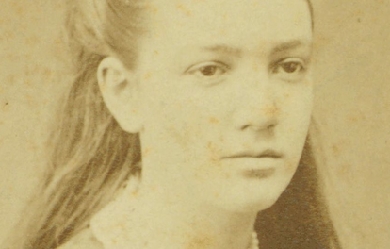
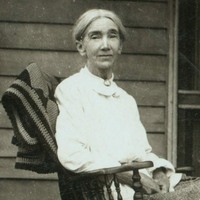
Agnes Ethelwyn Wetherald was born of English-Quaker parents at Rockwood, Ontario, April 26th, 1857. Her father was the late Rev. William Wetherald, who founded the Rockwood Academy about the middle of the last century, and was its principal for some years. He was a lover of good English, spoken and written, and his talented daughter has owed much to his careful teaching. He was the teacher whom the late James J. Hill, the railway magnate, had held in such grateful remembrance. Additional education was received by Miss Wetherald at the Friends' Boarding School, Union Springs, N.Y., and at Pickering College. Miss Wetherald began the writing of poetry later in life than most poets and her first book of verse, The House of the Trees and Other Poems, did not appear until 1895. This book at once gave her high rank among women poets. Prior to this, she had collaborated with G. Mercer Adam on writing and publishing a novel, An Algonquin Maiden, and had conducted the Woman's Department in The Globe, Toronto, under the nom de plume, 'Bel Thistlewaite.' In 1902, appeared her second volume of verse, Tangled in Stars, and, in 1904, her third volume, The Radiant Road. In the autumn of 1907, a collection of Miss Wetherald's best poems was issued, entitled, The Last Robin: Lyrics and Sonnets. It was warmly welcomed generally, by reviewers and lovers of poetry. The many exquisite gems therein so appealed to Earl Grey, the then Governor-General of Canada, that he wrote a personal letter of appreciation to the author, and purchased twenty-five copies of the first edition for distribution among his friends. For years Miss Wetherald has resided on the homestead farm, near the village of Fenwick, in Pelham Township, Weland county, Ontario, and there in the midst of a large orchard and other rural charms, has dreamed, and visioned, and sung, pouring out her soul in rare, sweet songs, with the naturalness of a bird. And like a bird she has a nest in a large willow tree, cunningly contrived by a nature-loving brother, where her muse broods contentedly, intertwining her spirit with every aspect of the beautiful environment.
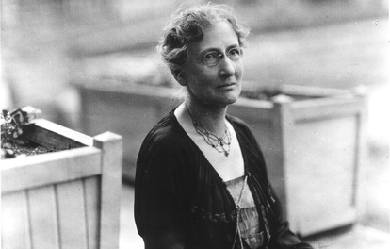
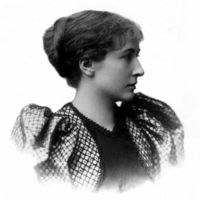
Harriet Monroe (December 23, 1860– September 26, 1936) was an American editor, scholar, literary critic, poet and patron of the arts. She is best known as the founding publisher and long-time editor of Poetry magazine, which made its debut in 1912. As a supporter of the poets Wallace Stevens, Ezra Pound, H. D., T. S. Eliot, William Carlos Williams, Carl Sandburg, Max Michelson and others, she played an important role in the development of modern poetry. Because she was a longtime correspondent of the poets she supported, her letters provide a wealth of information on their thoughts and motives. Monroe was born in Chicago, Illinois. She read at an early age; her father had a large library that provided refuge from domestic discord. In her autobiography, A Poet’s Life: Seventy Years in a Changing World, published two years after her death, Monroe recalls: “I started in early with Shakespeare, Byron, Shelley, with Dickens and Thackeray; and always the book-lined library gave me a friendly assurance of companionship with lively and interesting people, gave me friends of the spirit to ease my loneliness.”
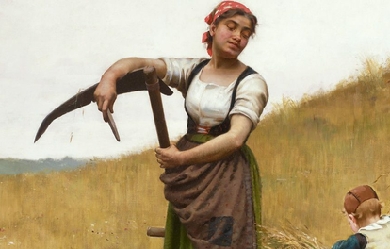
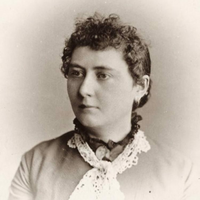
Isabella Valancy Crawford (25 December 1846– 12 February 1887) was an Irish-born Canadian writer and poet. She was one of the first Canadians to make a living as a freelance writer. “Crawford is increasingly being viewed as Canada’s first major poet.” She is the author of “Malcolm’s Katie,” a poem that has achieved “a central place in the canon of nineteenth-century Canadian poetry.” Life Isabella Valancy Crawford was the last surviving daughter of Dr. Stephen Crawford. She was born in Dublin, Ireland on Christmas Day, 1846. The family emigrated to Canada when she was ten years of age. Much of Isabella Crawford’s early life is unknown. By her own account she was born in Dublin, Ireland, the sixth daughter of Dr. Stephen Dennis Crawford and Sydney Scott; but “No record has been found of that marriage or of the birthdates and birthplaces of at least six children, of whom Isabella wrote that she was the sixth.” The family was in Canada by 1857; in that year, Dr. Crawford applied for a license to practice medicine in Paisley, Canada West. “In a few years, disease had taken nine of the twelve children, and a small medical practice had reduced the family to semi-poverty.” Dr. Crawford served as Treasurer of Paisley Township, but "a scandal of a missing $500 in misappropriated Township funds and the subsequent suicide of one of his bondsmen" caused the family to leave Paisley in 1861. By chance Dr. Crawford met Richard Strickland of Lakefield. Strickland invited the Crawfords to live at his home, out of charity, and because Lakefield did not have a doctor. There the family became acquainted with Strickland’s sisters, writers Susanna Moodie and Catherine Parr Traill. Isabella Crawford reportedly began writing at that time. She was also thought to be a close companion of Mrs. Traill’s daughter, Katharine (Katie). In 1869 the family moved to Peterborough, and Crawford began to write and publish poems and stories. Her first published poem, “A Vesper Star”, appeared in The Toronto Mail on Christmas Eve, 1873. "When Dr. Crawford died, on 3 July 1875, the three women"– Isabella, her mother, and her sister Emma, all who were left in the household– “became dependent on Isabella’s literary earnings.” After Emma died of tuberculosis, "Isabella and her mother moved in 1876 to Toronto, which was the centre of the publishing world in Canada.” “Although Isabella had been writing while still living in Lakefield... and had published poems in Toronto newspapers and stories in American magazines while living in Peterborough, when she moved to Toronto she turned her attention in earnest to the business of writing.” “During this productive period she contributed numerous serialized novels and novellas to New York and Toronto publications,” “including the Mail, the Globe, the National, and the Evening Telegram. She also contributed ”a quantity of 'occasional’ verse to the Toronto papers... and articles for the Fireside Monthly. In 1886 she became the first local writer to have a novel, A little Bacchante, serialized in the Evening Globe. In her lifetime Crawford published only one book, Old Spookses’ Pass, Malcolm’s Katie and Other Poems in 1884. It was privately printed and sold poorly. Crawford paid for the printing of 1,000 copies, and presumably sent out many review copies; “there were notices in such London journals as the Spectator, the Graphic, the Leisure Hour, and the Saturday Review. These articles pointed to ‘versatility of talent,’ and to such qualities as ‘humour, vivacity, and range of power,’ which were impressive and promising despite her extravagance of incident and ‘untrained magniloquence.’” However, only 50 books sold. “Crawford was understandably disappointed and felt she had been neglected by 'the High Priests of Canadian Periodical Literature’” (Arcturus 84).” Crawford died on 12 February 1887 in Toronto. She was buried in Peterborough’s Little Lake Cemetery near the Otonabee River. She had died in poverty and for years her body lay in an unmarked grave. A fundraising campaign was begun in 1899, and on 2 November 1900, a six-foot Celtic Cross was raised above her grave, inscribed: "Isabella Valancy Crawford / Poet / By the Gift of God.” Writing Crawford was a prolific writer. “For the most part Crawford’s prose followed the fashion of the feuilleton of the day.” Her magazine writing “displays a skilful and energetic use of literary conventions made popular by Dickens, such as twins and doubles, mysterious childhood disappearances, stony-hearted fathers, sacrificial daughters, wills and lost inheritances, recognition scenes, and, to quote one of her titles, 'A kingly restitution’.” As a whole, though, it “was romantic-Gothic ‘formula fiction.’” It is her poetry that has endured. Just two years after her death, W.D. Lighthall included generous selections from her book in his groundbreaking 1889 anthology, Songs of the Great Dominion, bringing it to a wider audience. “In the 20th century critics have given the work increasing respect and appreciation." "Crawford’s Collected Poems were edited (Toronto 1905) by J.W. Garvin, with an introduction by Ethelwyn Wetherald," a popular Canadian poet. Wetherald called Crawford “purely a genius, not a craftswoman, and a genius who has patience enough to be an artist.” In his 1916 anthology, Canadian Poets, Garvin stated that Crawford was “one of the greatest of women poets.” Poet Katherine Hale, Garvin’s wife, published a volume on Isabella Valancy Crawford in the 1920s Makers of Canada series. All of this helped Crawford’s poetry become more widely known. . A "serious critical assessment began in the mid-1940s with A.J.M. Smith, Northrop Frye, and E.K. Brown, who called her ‘the only Canadian woman poet of real importance in the last century.’" "Recognition of Isabella Valancy Crawford’s extraordinary mythopoeic power, and her structural use of images, came... in James Reaney’s lecture 'Isabella Valancy Crawford’ in Our living tradition (series 3, 1959)." Then a “renewed interest in Crawford resulted in the publication of forgotten manuscripts and critical articles” in the 1970s. "A reprint of the collected poems in 1972, with an introduction by poet James Reaney, made Crawford’s work generally available; six of her short stories, edited by Penny Petrone, appeared in 1975; and in 1977 the Borealis Press published a book of fairy stories and a long unfinished poem, ‘Hugh and Ion.’.” Crawford wrote a wide variety of poems, ranging from the Walter Scott-like doggerel (pun intended) of “Love Me, Love My Dog”, to the eerie mysticism of “The Camp of Souls” to the eroticism of The Lily Bed. But it is mainly Crawford’s "long narrative poems [that] have received particular attention." “Old Spookses’ Pass” is a dialect poem, set in the Rocky Mountains, concerning a dream vision of a midnight cattle stampede towards a black abyss that is stilled by a whirling lariat; “The helot” makes use of the Spartans’ practice of intoxicating their helots to teach their own children not to drink, as the starting-point for a highly incantatory and hypnotic poem that ends in Bacchic possession and death; and “Gisli the Chieftain” fuses mythic elements, such as the Russian spring goddess Lada and the Icelandic Brynhild, into a narrative of love, betrayal, murder, and reconciliation. These poems follow a pattern of depicting the world as a battleground of opposites– light and dark, good and evil– reconciled by sacrificial love.” Malcolm’s Katie The bulk of critical attention has gone to “Malcolm’s Katie.” That poem is a long narrative in blank verse, dealing mainly with the love and trials of young Max and Katie in the 19th-century Canadian bush, but containing a second running narrative recounting the war between the North and South Winds (Winter and Summer personified as First Nations warriors), and also a collection of love songs in different stanza forms. Many of those lauding the poem have seen their own interests reflected in it. For instance, socialist Livesay gave a reading that made the poem sound like a manifesto of Utopian socialism: Crawford presents a new myth of great significance to Canadian literature: the Canadian frontier as creating ‘the conditions for a new Eden,’ not a golden age or a millennium, but ‘a harmonious community, here and now.’ Crawford’s social consciousness and concern for humanity’s future committed her, far ahead of her time and milieu, to write passionate pleas for brotherhood, pacifism, and the preservation of a green world. Her deeply felt belief in a just society wherein men and women would have equal status in a world free from war, class hatred, and racial prejudice dominates all her finest poetry.” Others have similarly seen their concerns reflected in the poem. “Malcolm’s Katie has been given a nationalistic reading by Robin Mathews, a feminist reading by Clara Thomas, a biographical reading by Dorothy Farmiloe and a Marxian reading by Kenneth Hughes, as well as various literary-historical readings by Dorothy Livesay, Elizabeth Waterston, John Ower, Robert Alan Burns and others.” Not just interpretations on the poem’s meaning, but evaluations of its worth, have varied widely. Its detractors have included poet Louis Dudek, who called Crawford “'a failed poet’ of 'hollow convention... counterfeit feeling... and fake idealism’”; and Roy Daniells, who in The Literary History of Canada (1965) called “Malcolm’s Katie” “a preposterously romantic love story on a Tennysonian model in which a wildly creaking plot finally delivers true love safe and triumphant.” Some of the poem’s supporters concede the Tennyson influence but point out that there is much more to it: “While appearing on the surface melodramatic and stereotyped, Crawford’s love story is compelling and powerful; what seems at first a conventional conflict between rival suitors for the hand of the heroine becomes a serious, even profound, account of philosophical, social and ideological confrontations.” “In ‘Malcolm’s Katie’ Crawford adapted to the setting of pioneer Canada the domestic idyll as she learned it from Tennyson. Striking and new, however, is Crawford’s location of Max and Katie’s conventional love story within a context of Native legends—Indian Summer and the battle of the North and South Winds.” This myth telling (however accurate it was as a portrayal of First Nations beliefs) is what many of its supporters see as giving the poem its power. For instance, writing about “Malcolm’s Katie, critic Northrop Frye pronounced Crawford ”the most remarkable mythopoeic imagination in Canadian poetry": the “framework’ of Isabella Crawford is that of an intelligent and industrious female songbird of the kind who filled so many anthologies in the last century. Yet the ”South Wind" passage from Malcolm’s Katie is only the most famous example of the most remarkable mythopoeic imagination in Canadian poetry. She puts her myth in an Indian form, which reminds us of the resemblance between white and Indian legendary heroes in the New World, between Paul Bunyan and Davy Crockett on the one hand and Glooscap on the other. The white myths are not necessarily imitated from the Indian ones, but they may have sprung from an unconscious feeling that the primitive myth expressed the imaginative impact of the country as more artificial literature could never do.” Frye believed, and thought Crawford’s “poetic sense” told her, “that the most obvious development in the romantic landscape is toward the mythological”; and he saw Crawford’s attempt at an indigenous Canadian myth as the intellectual equivalent of the simultaneous pioneer exploration and settlement: “In the long mythopoeic passage from Isabella Crawford’s Malcolm’s Katie, beginning ‘The South Wind laid his moccasins aside,’ we see how the poet is, first, taming the landscape imaginatively, as settlement tames it physically, by animating the lifeless scene with humanized figures, and, second, integrating the literary tradition of the country by deliberately re-establishing the broken cultural link with Indian civilization.” Hugh and Ion Dorothy Livesay, researching Crawford’s life for the Dictionary of Canadian Biography in 1977, discovered the manuscript of an uncompleted narrative poem in the Crawford fonds at Kingston, Ontario’s Queen’s University. Called Hugh and Ion, it deals with "Hugh and Ion, two friends who have fled the noxious city—probably contemporary Toronto—for purification in the primal wilderness [and] carry on a sustained dialogue, Hugh arguing for hope, light, and redemption and Ion pointing out despair, darkness, and intractable human perversity." Perhaps due to Crawford’s Toronto experiences, this last poem marked a significant change in her views, showing the city as “a demonic, urban world of isolation and blindness which has wilfully cut itself off from the regenerative power of the wildernese. The confident innocence and romantic idealism, which account for much of the inner fire of Malcolm’s Katie, have simply ceased to be operative.... Nowhere else in nineteenth-century Canadian literature, with the exception of Lampman’s ”the End of Things", is there another example of the creative imagination being brought to bear, in so Blakean a manner, on the nascent social evils of the ‘infant city.’” Recognition Isabella Valancy Crawford was designated a Person of National Historic Significance in 1947. A small garden park in downtown Toronto, at Front and John Streets (near the CN Tower), has been named Isabella Valancy Crawford Park.
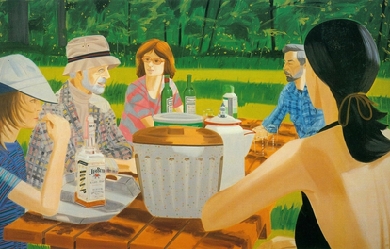
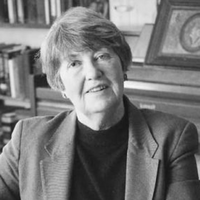
Lisel Mueller was born in Hamburg, Germany, on February 8, 1924 and immigrated to America at the age of 15. She won the U.S. National Book Award in 1981 and the Pulitzer Prize in 1997. Her poems are extremely accessible, yet intricate and layered. While at times whimsical and possessing a sly humor, there is an underlying sadness in much of her work.
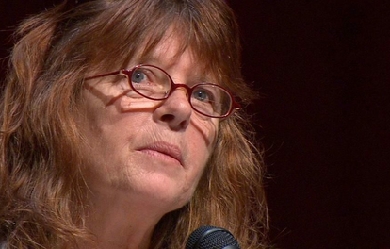
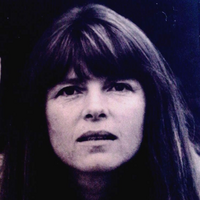
Dorianne Laux (born January 10, 1952 in Augusta, Maine) is an American poet. Biography Laux worked as a sanatorium cook, a gas station manager, and a maid before receiving a B.A. in English from Mills College in 1988. Laux taught at the University of Oregon. She is a professor at North Carolina State University’s creative writing program, and the MFA in Writing Program at Pacific University. She is also a contributing editor at The Alaska Quarterly Review. Her work appeared in American Poetry Review, Five Points, Kenyon Review, Ms., Orion, Ploughshares, Prairie Schooner, Southern Review, TriQuarterly, Zyzzyva. She has also appeared in online journals such as Web Del Sol. Laux lives in Raleigh, North Carolina with her husband, poet Joseph Millar. She has one daughter.
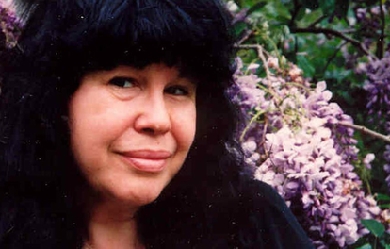
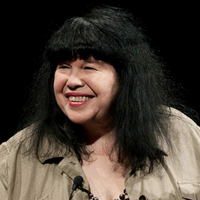
Marge Piercy (born March 31, 1936) is an American progressive activist, feminist, and writer. Her work includes Woman on the Edge of Time; He, She and It, which won the 1993 Arthur C. Clarke Award; and Gone to Soldiers, a New York Times Best Seller and a sweeping historical novel set during World War II. Piercy's work is rooted in her Jewish heritage, Communist social and political activism, and feminist ideals.
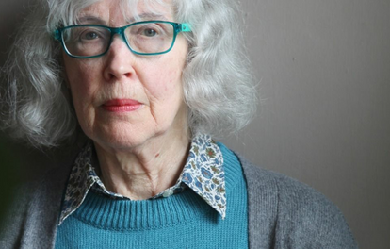
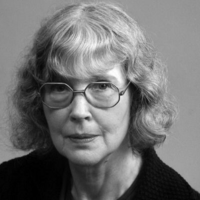
Fleur Adcock (born 10 February 1934) is a New Zealand poet and editor, of English and Northern Irish ancestry, who has lived much of her life in England. Life and career Fleur Adcock; the oldest of two sisters; was born in Papakura by Cyril John Adcock and Irene Robinson Adcock. She spent eight (8) years in England. Marilyn Duckworth; her sibling is the novelist. Fleur Adcock studied Classics at Victoria University of Wellington, graduating with an MA. She worked as an assistant lecturer and later an assistant librarian at the University of Otago in Dunedin until 1962. She was married to two famous New Zealand literary personalities. In August 1952, she married Alistair Campbell (divorced 1958). Then in February 1962 she married Barry Crump, divorcing in 1963. In 1963, Adcock returned to England and took up a post as an assistant librarian at the Foreign and Commonwealth Office in London until 1979. Since then she has been a freelance writer, living in East Finchley, north London. She has held several literary fellowships, including the Northern Arts Literary Fellowship in Newcastle upon Tyne and Durham in 1979–81. Adcock’s poetry is typically concerned with themes of place, human relationships and everyday activities, but frequently with a dark twist given to the mundane events she writes about. Formerly, her early work was influenced by her training as a classicist but her more recent work is looser in structure and more concerned with the world of the unconscious mind. Poetry collections 1964: The Eye of the Hurricane, Wellington: Reed 1967: Tigers, London: Oxford University Press 1971: High Tide in the Garden, London: Oxford University Press 1974: The Scenic Route, London and New York: Oxford University Press 1979: The Inner Harbour, Oxford and New York: Oxford University Press 1979: Below Loughrigg, Newcastle upon Tyne: Bloodaxe Books 1983: Selected Poems, Oxford and New York: Oxford University Press 1986: Hotspur: a ballad, Newcastle upon Tyne: Bloodaxe Books ISBN 978-1-85224-001-1 1986: The Incident Book, Oxford; New York: Oxford University Press 1988: Meeting the Comet, Newcastle upon Tyne: Bloodaxe Books 1991: Time-zones, Oxford and New York: Oxford University Press 1997: Looking Back, Oxford and Auckland: Oxford University Press 2000: Poems 1960–2000, Newcastle upon Tyne: Bloodaxe Books ISBN 978-1-85224-530-6 2010: Dragon Talk, Newcastle upon Tyne: Bloodaxe Books ISBN 978-1-85224-878-9 2013: Glass Wings, Tarset: Bloodaxe Books and Wellington, NZ: Victoria University Press. 2014: The Land Ballot, Wellington, NZ: Victoria University Press, Tarset: Bloodaxe Books. 2017: Hoard, Wellington, NZ: Victoria University Press, Hexham: Bloodaxe Books. Edited or translated 1982: Editor, Oxford Book of Contemporary New Zealand Poetry, Auckland: Oxford University Press 1983: Translator, The Virgin and the Nightingale: Medieval Latin poems, Newcastle upon Tyne: Bloodaxe Books, ISBN 978-0-906427-55-2 1987: Editor, Faber Book of 20th Century Women’s Poetry, London and Boston: Faber and Faber 1989: Translator, Orient Express: Poems. Grete Tartler, Oxford and New York: Oxford University Press 1992: Translator, Letters from Darkness: Poems, Daniela Crasnaru, Oxford: Oxford University Press 1994: Translator and editor, Hugh Primas and the Archpoet, Cambridge, England, and New York: Cambridge University Press 1995: Editor (with Jacqueline Simms), The Oxford Book of Creatures, verse and prose anthology, Oxford: Oxford University Press Awards and honours * 1961: Festival of Wellington Poetry Award * 1964: New Zealand State Literary Fund Award * 1968: Buckland Award (New Zealand) * 1968: Jessie Mackay Prize (New Zealand) * 1972: Jessie Mackay Prize (New Zealand) * 1976: Cholmondeley Award (United Kingdom) * 1979: Buckland Award (New Zealand) * 1984: New Zealand National Book Award * 1984: Elected Fellow of the Royal Society of Literature * 1988: Arts Council Writers’ Award (United Kingdom) * 1996: Officer of the Order of the British Empire for her contribution to New Zealand literature * 2006: Queen’s Gold Medal for Poetry (United Kingdom) * 2008: Companion of the New Zealand Order of Merit, for services to literature.


Alice Oswald (born 1966) is a British poet from Reading, Berkshire. Her work won the T. S. Eliot Prize in 2002 and the Griffin Poetry Prize in 2017. In September 2017, she was named as BBC Radio 4's second Poet-in-Residence, succeeding Daljit Nagra. Personal life Oswald is the daughter of Charles William Lyle Keen and Lady Priscilla Mary Rose Curzon, daughter of Edward Curzon, 6th Earl Howe. Oswald read Classics at New College, Oxford. She then trained as a gardener and worked at such sites as Chelsea Physic Garden, Wisley and Clovelly Court Gardens. She currently lives on the Dartington Estate in Devon with her husband, the playwright Peter Oswald (also a trained classicist), and her three children. Alice Oswald is the sister of actor Will Keen and writer Laura Beatty.
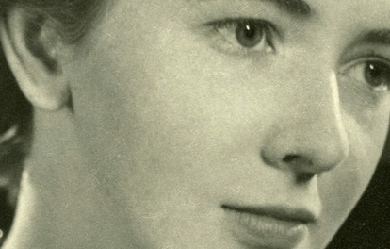
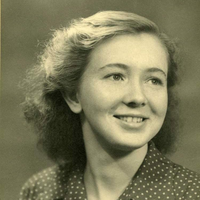
Elizabeth Jennings CBE (18 July 1926– 26 October 2001) was an English poet. Life and career Jennings was born in Boston, Lincolnshire. When she was six, her family moved to Oxford, where she remained for the rest of her life. There she later attended St Anne’s College. After graduation, she became a writer. Jennings’ early poetry was published in journals such as Oxford Poetry, New English Weekly, The Spectator, Outposts and Poetry Review, but her first book was not published until she was 27. The lyrical poets she cited as having influenced her were Hopkins, Auden, Graves and Muir. Her second book, A Way of Looking, won the Somerset Maugham award and marked a turning point, as the prize money allowed her to spend nearly three months in Rome, which was a revelation. It brought a new dimension to her religious belief and inspired her imagination. Regarded as traditionalist rather than an innovator, Jennings is known for her lyric poetry and mastery of form. Her work displays a simplicity of metre and rhyme shared with Philip Larkin, Kingsley Amis and Thom Gunn, all members of the group of English poets known as The Movement. She always made it clear that, whilst her life, which included a spell of severe mental illness, contributed to the themes contained within her work, she did not write explicitly autobiographical poetry. Her deeply held Roman Catholicism coloured much of her work. She died in a care home in Bampton, Oxfordshire and is buried in Wolvercote Cemetery, Oxford. Selected honours and awards 1953: Arts Council of Great Britain Prize for the best first book of poems for Poems 1955: Somerset Maugham Prize for A Way of Looking. 1987: W.H. Smith Literary Award for Collected Poems 1953–1985 1992: Commander of the Order of the British Empire (CBE) 2001: Honorary Doctorate of Divinity from Durham University
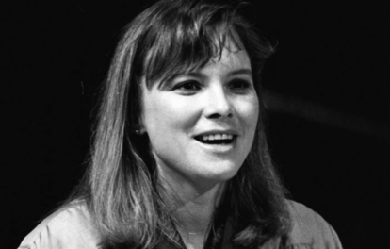
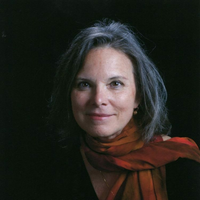
Carolyn Forché (born April 28, 1950) is an American poet, editor, translator, and human rights advocate. She has received awards for her literary work. Biography Forché was born in Detroit, Michigan to Michael Joseph and Louise Nada Blackford Sidlosky. Forché earned a Bachelor of Arts (B.A) in Creative Writing at Michigan State University in 1972, and MFA at Bowling Green State University in 1974. She taught at a number of universities, including Bowling Green State University, Michigan State University, the University of Virginia, Skidmore College, Columbia University, San Diego State University and in the Master of Fine Arts program at George Mason University. She is now Director of the Lannan Center for Poetry and Poetics and holds the Lannan Chair in Poetry at Georgetown University in Washington, D.C. She lives in Maryland with her husband, Harry Mattison, a photographer, whom she married in 1984. Career Forché's first poetry collection, Gathering the Tribes (1976), won the Yale Series of Younger Poets Competition, leading to publication by Yale University Press. In 1977, she traveled to Spain to translate the work of Salvadoran-exiled poet Claribel Alegría. She has also translated the work of Georg Trakl and Mahmoud Darwish, as well as many others. Upon her return from Spain, she received a Guggenheim Fellowship, which enabled her to travel to El Salvador, where she worked as a human rights advocate. Her second book, The Country Between Us (1981), was published with the help of Margaret Atwood. It received the Poetry Society of America’s Alice Fay di Castagnola Award, and was also the Lamont Poetry Selection of the Academy of American Poets. She won the 2006 Robert Creeley Award. Her articles and reviews have appeared in The New York Times, The Washington Post, The Nation, Esquire, Mother Jones, Boston Review, and others. Forché has held three fellowships from the National Endowment for the Arts, and in 1992 received a Lannan Foundation Literary Fellowship. Her anthology, Against Forgetting: Twentieth-Century Poetry of Witness, was published in 1993, and her third book of poetry, The Angel of History (1994), was chosen for The Los Angeles Times Book Award. Her works include the famed poem The Colonel (The Country Between Us). She is also a trustee for the Griffin Poetry Prize. Although Forché is sometimes described as a political poet, she considers herself a poet who is politically engaged. After first acquiring both fame and notoriety for her second volume of poems, The Country Between Us, she pointed out that this reputation rested on a limited number of poems describing what she personally had experienced in El Salvador during the Salvadoran Civil War. Her aesthetic is more one of rendered experience and at times of mysticism rather than one of ideology or agitprop. Forché is particularly interested in the effect of political trauma on the poet’s use of language. The anthology Against Forgetting was intended to collect the work of poets who had endured the impress of extremity during the 20th century, whether through their engagements or force of circumstance. These experiences included warfare, military occupation, imprisonment, torture, forced exile, censorship, and house arrest. The anthology, composed of the work of one hundred and forty-five poets writing in English and translated from over thirty languages, begins with the Armenian Genocide and ends with the uprising of the pro-Democracy movement at Tiananmen Square. Although she was not guided in her selections by the political or ideological persuasions of the poets, Forché believes the sharing of painful experience to be radicalizing, returning the poet to an emphasis on community rather than the individual ego. In this she was strongly influenced by Terrence des Pres. Forché is also influenced by her Slovak family background, particularly the life story of her grandmother, an immigrant whose family included a woman resistance fighter imprisoned during the Nazi occupation of former Czechoslovakia. Forché was raised Roman Catholic and religious themes are frequent in her work. Among her translations are Mahmoud Darwish’s Unfortunately, It Was Paradise: Selected Poems (2003), Claribel Alegría’s Sorrow (1999), and Robert Desnos’s Selected Poetry (with William Kulik, for the Modern English Poetry Series, 1991). Her fourth book of poems, Blue Hour, was released in 2003. Other books include a memoir, The Horse on Our Balcony (2010, HarperCollins); a book of essays (2011, HarperCollins); and a fifth collection of poems, In the Lateness of the World (Bloodaxe Books, due out in 2017). Forché received an honorary doctorate from the University of Scranton in 2010.


